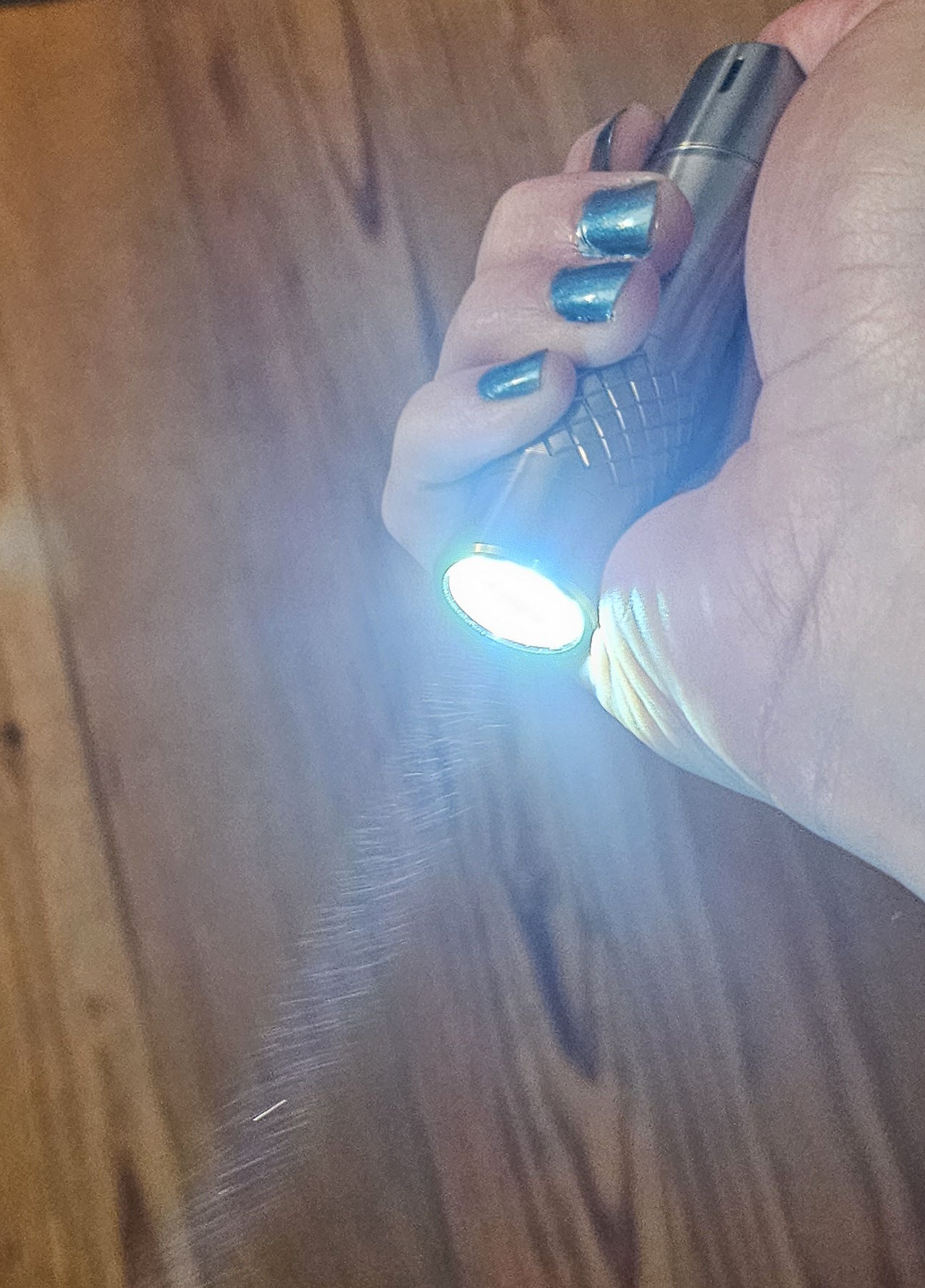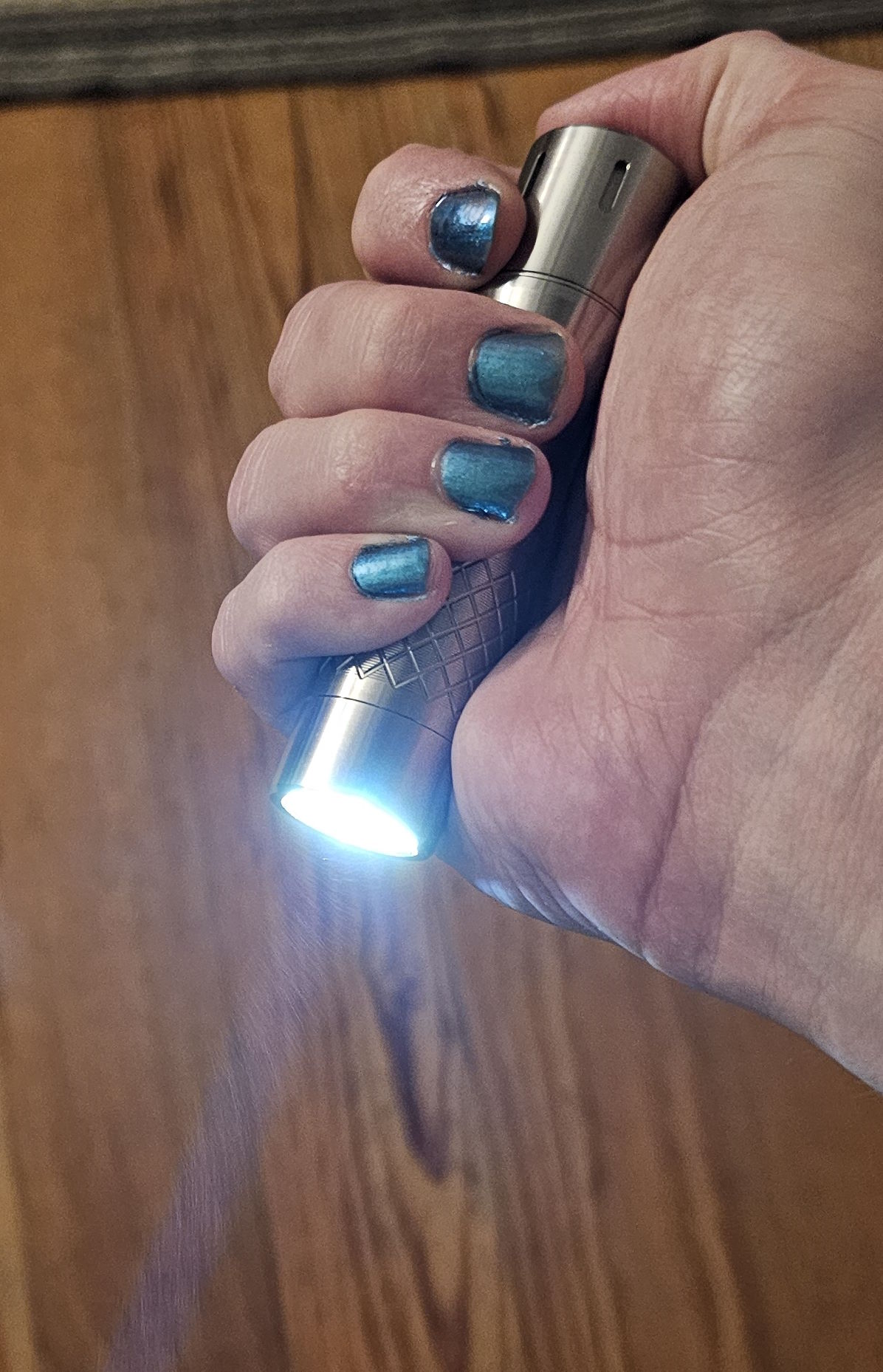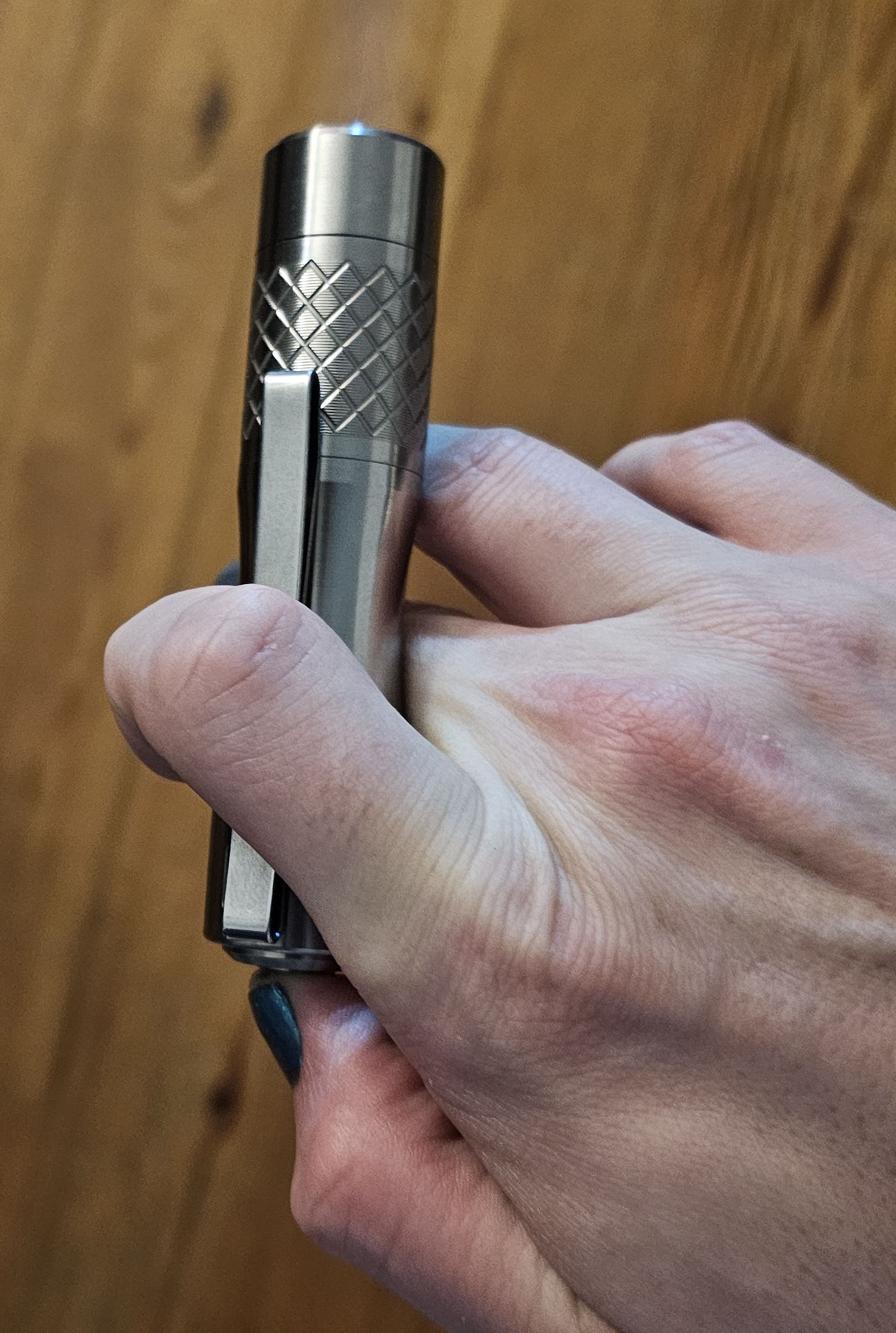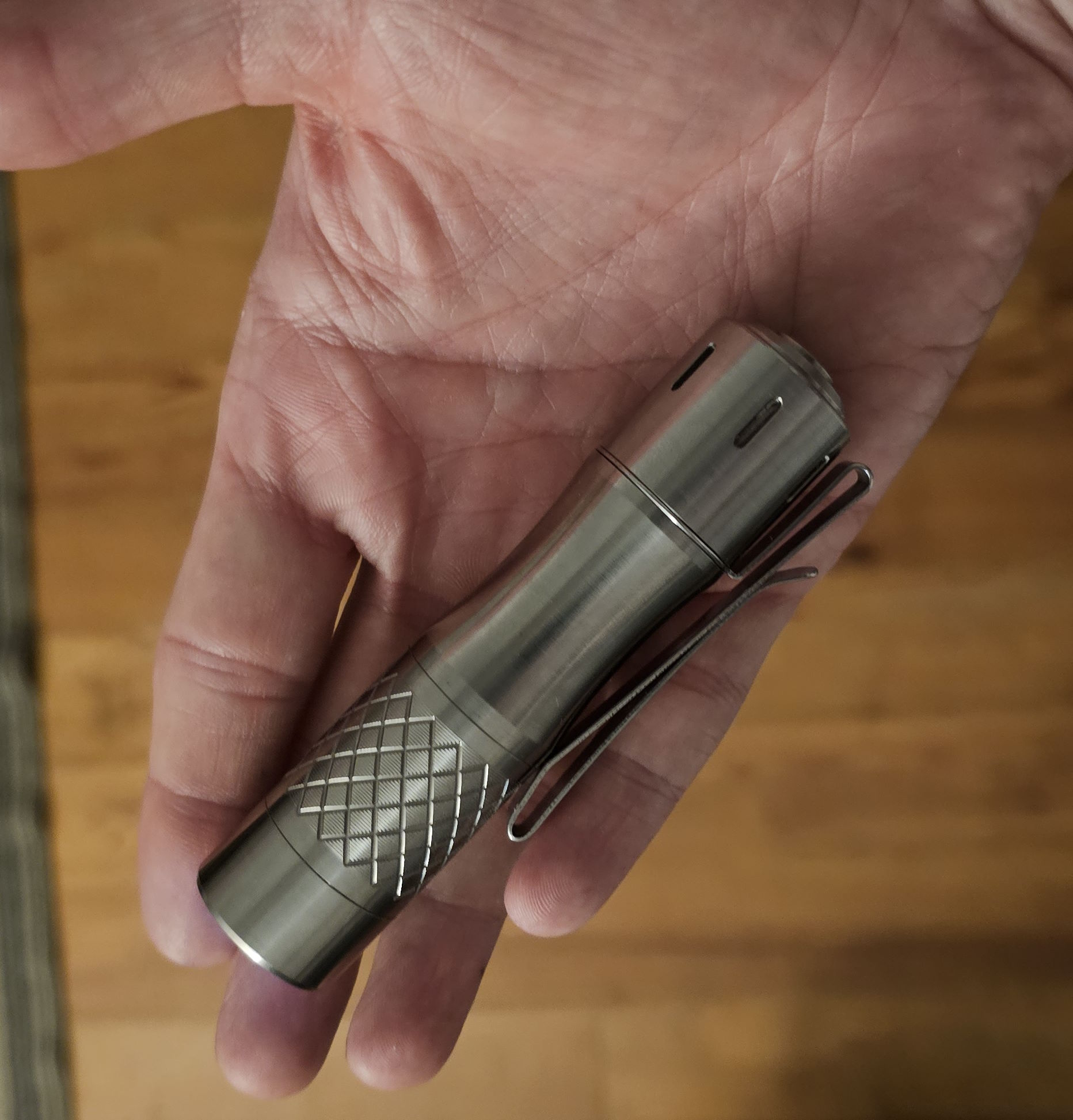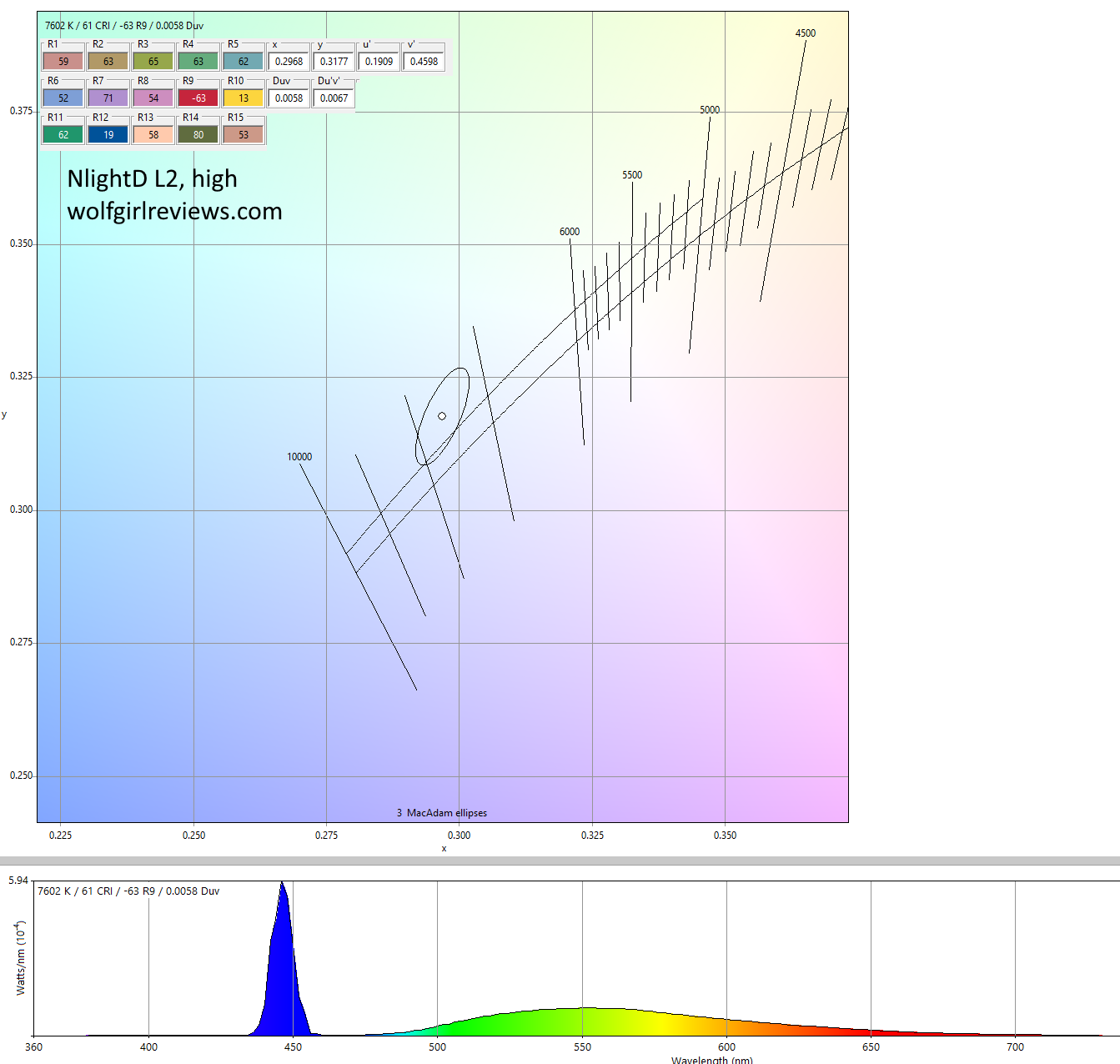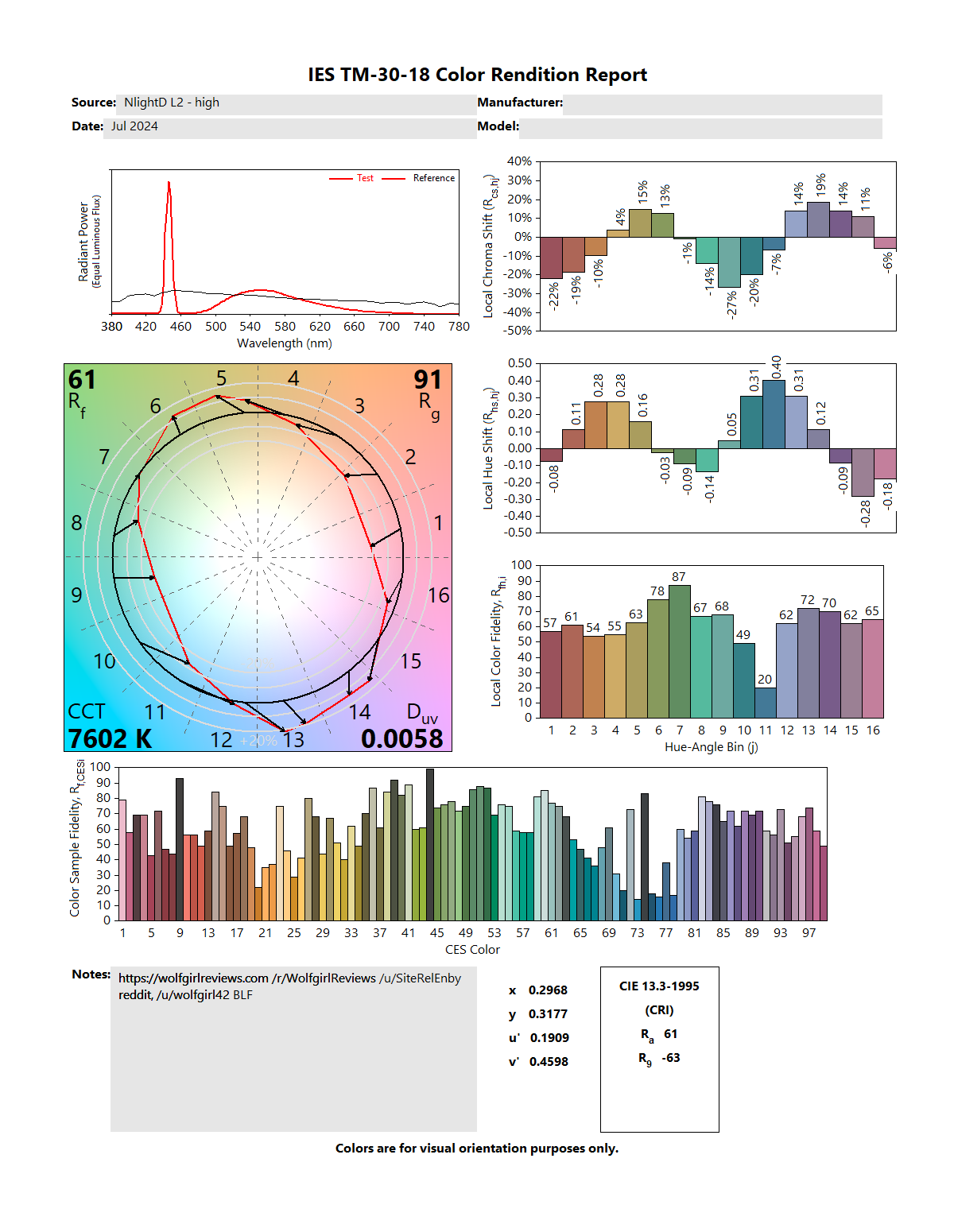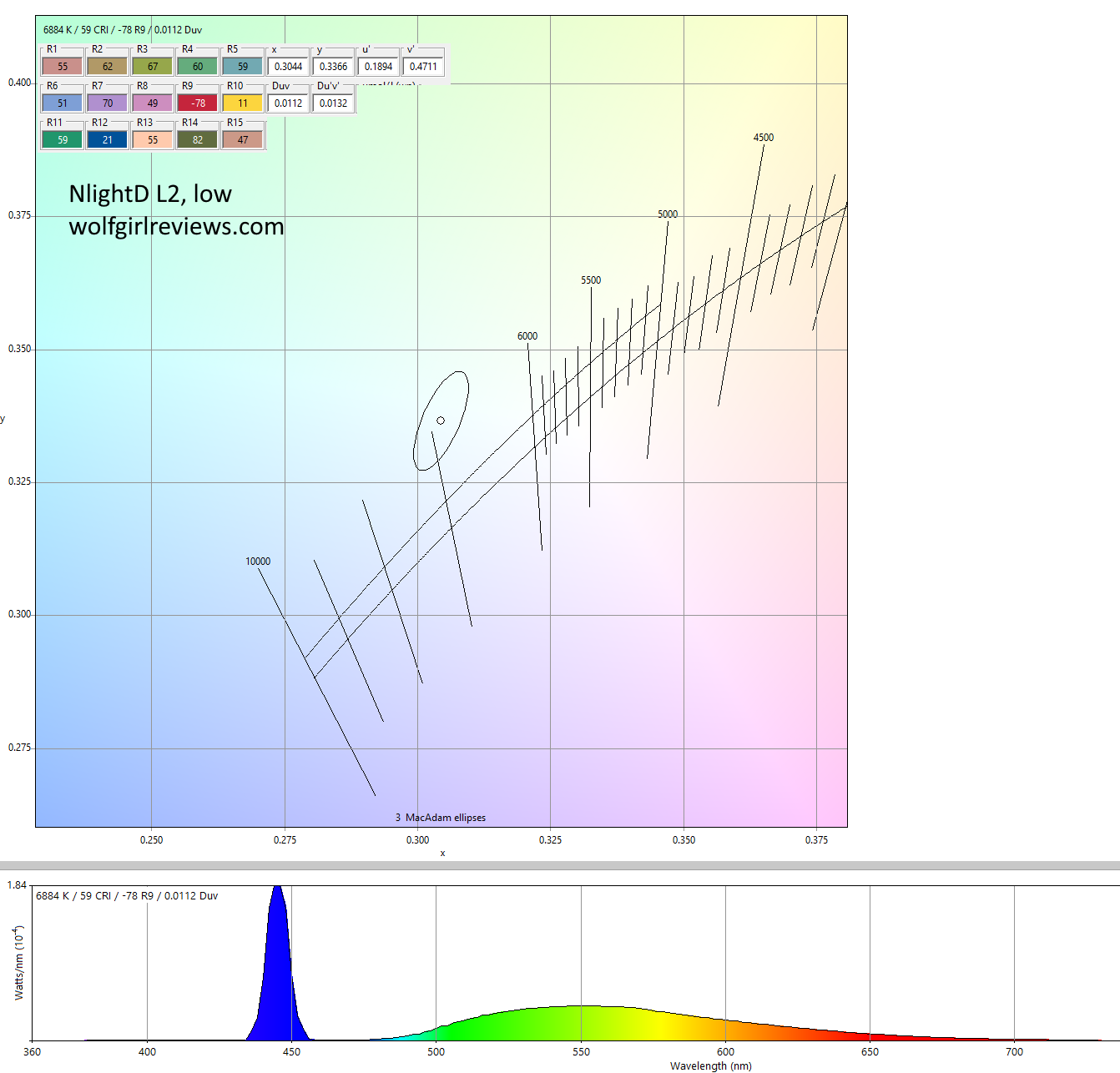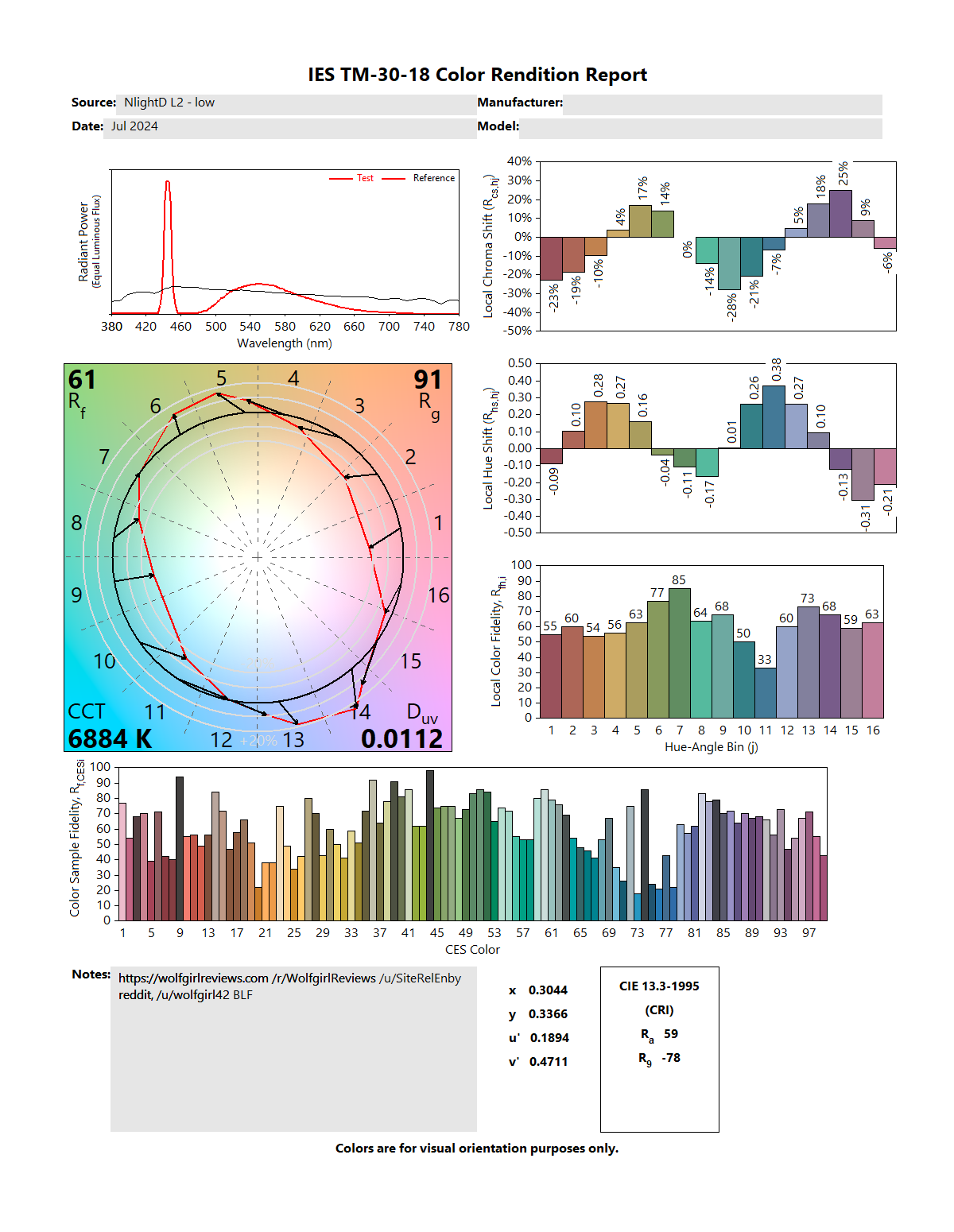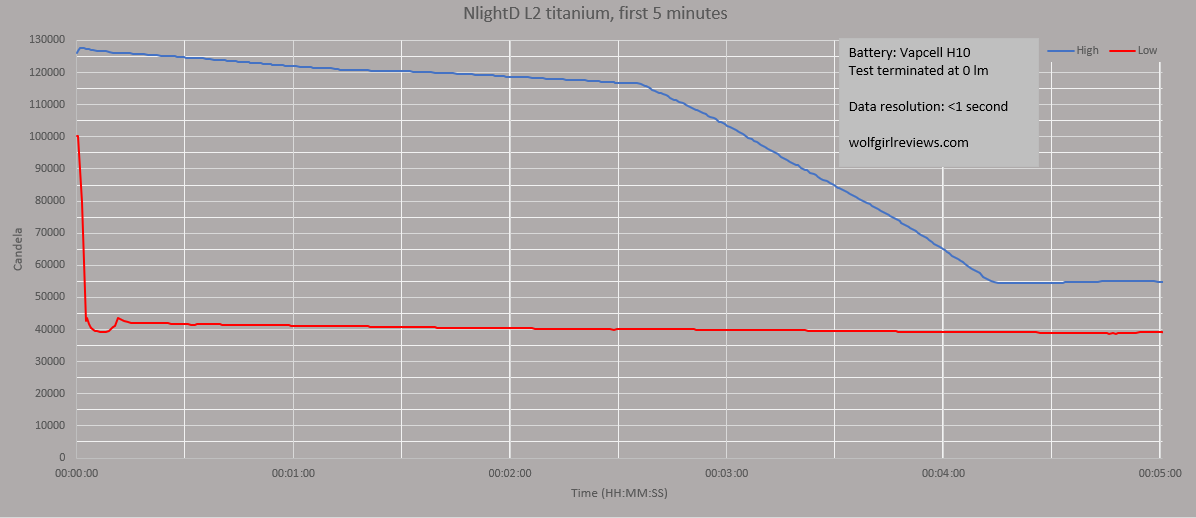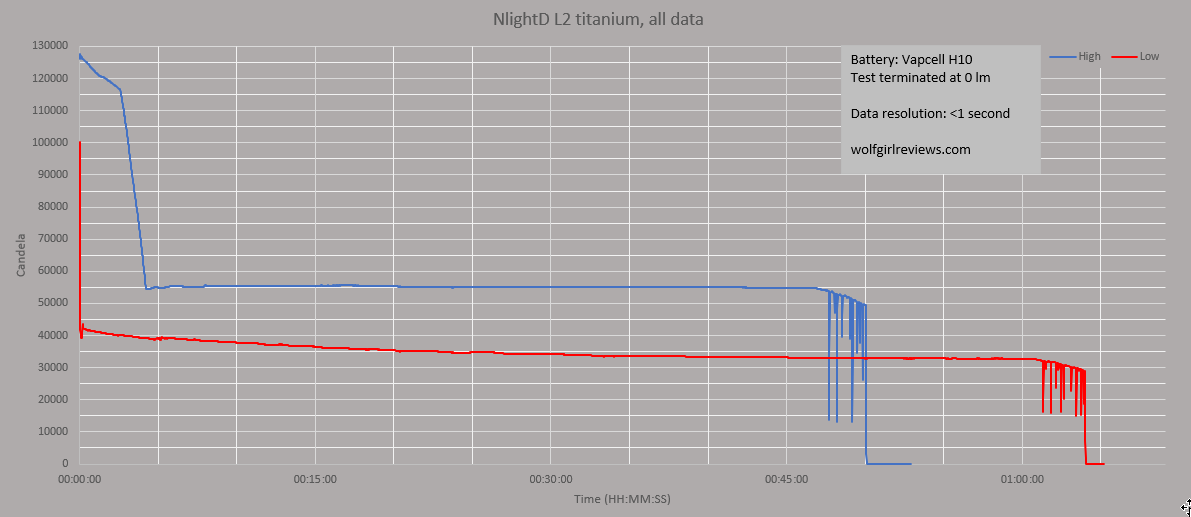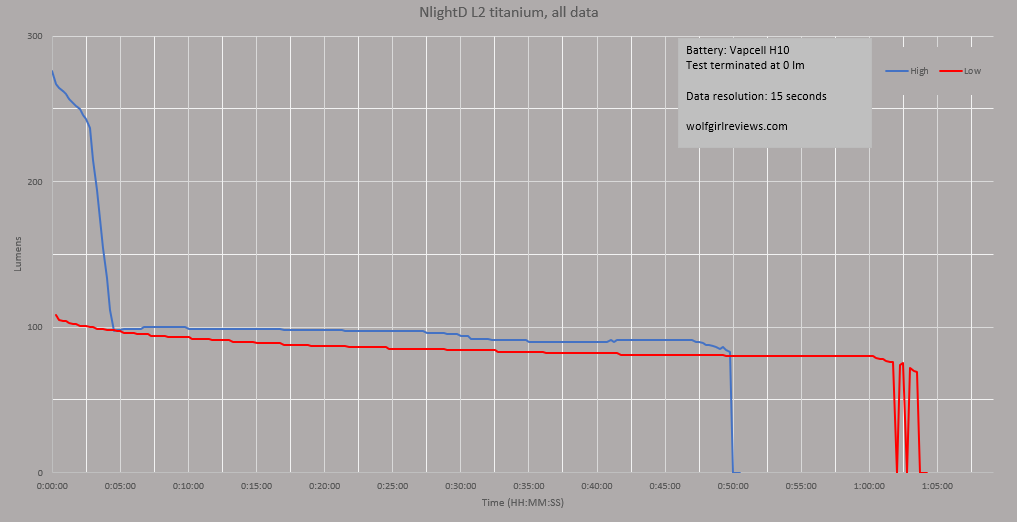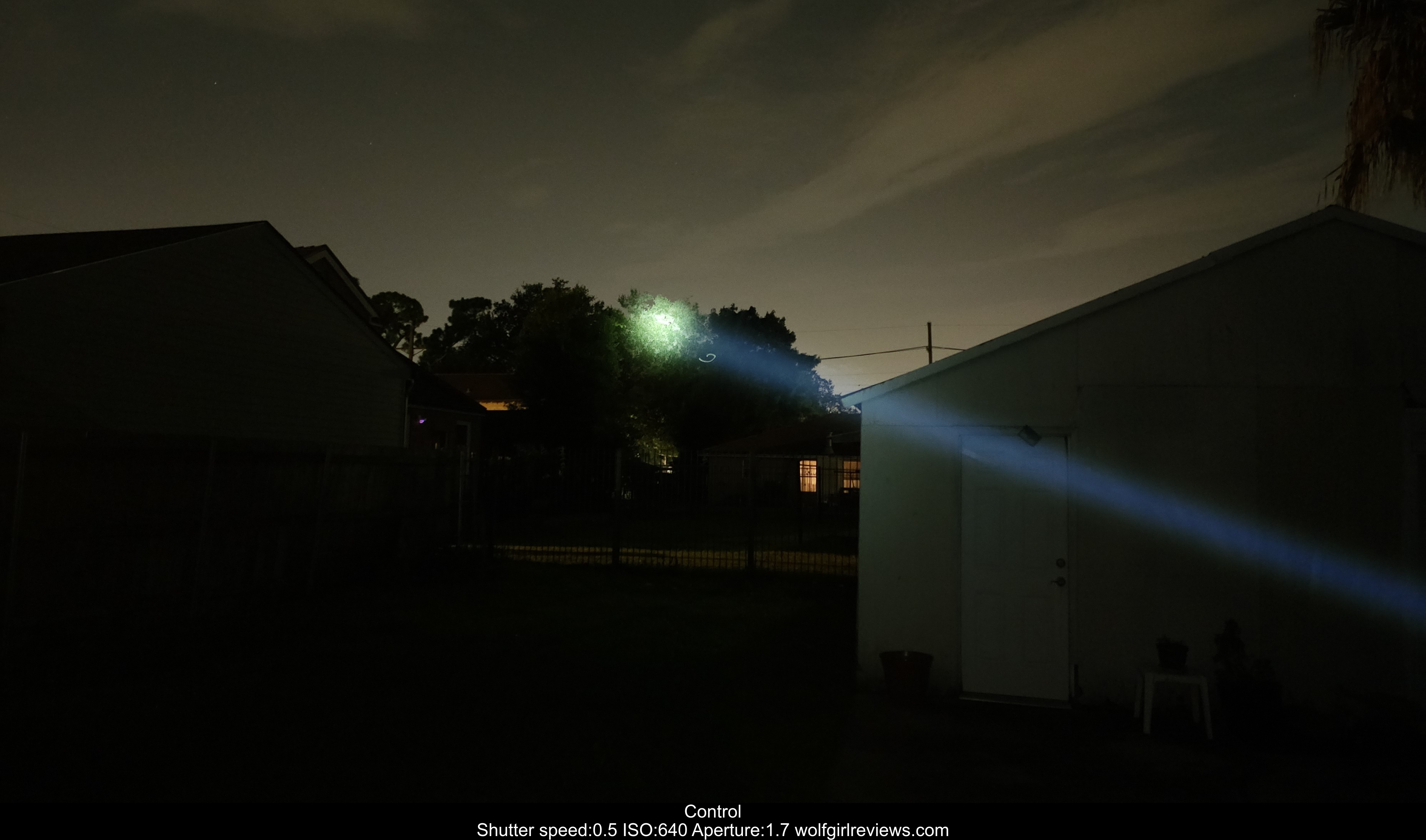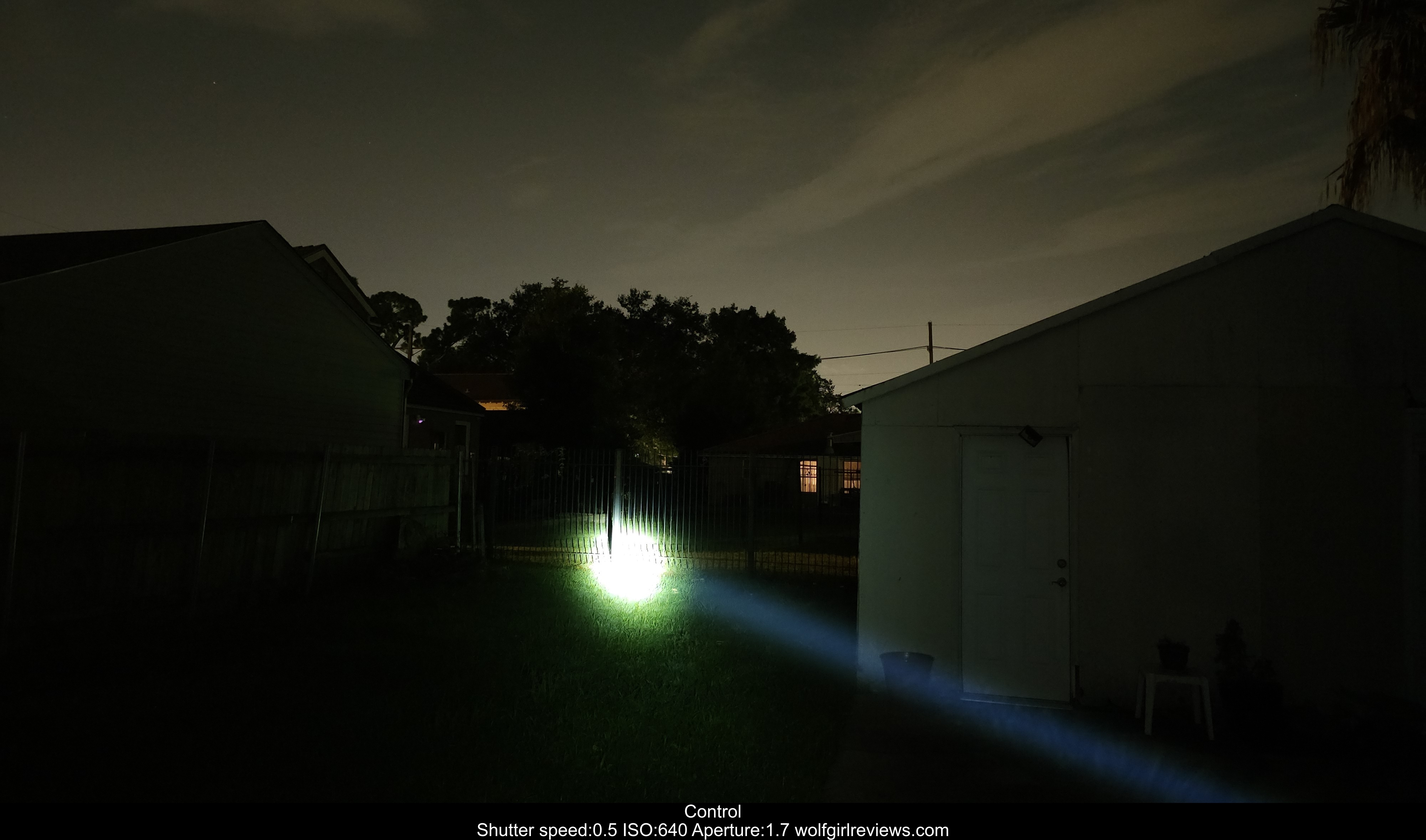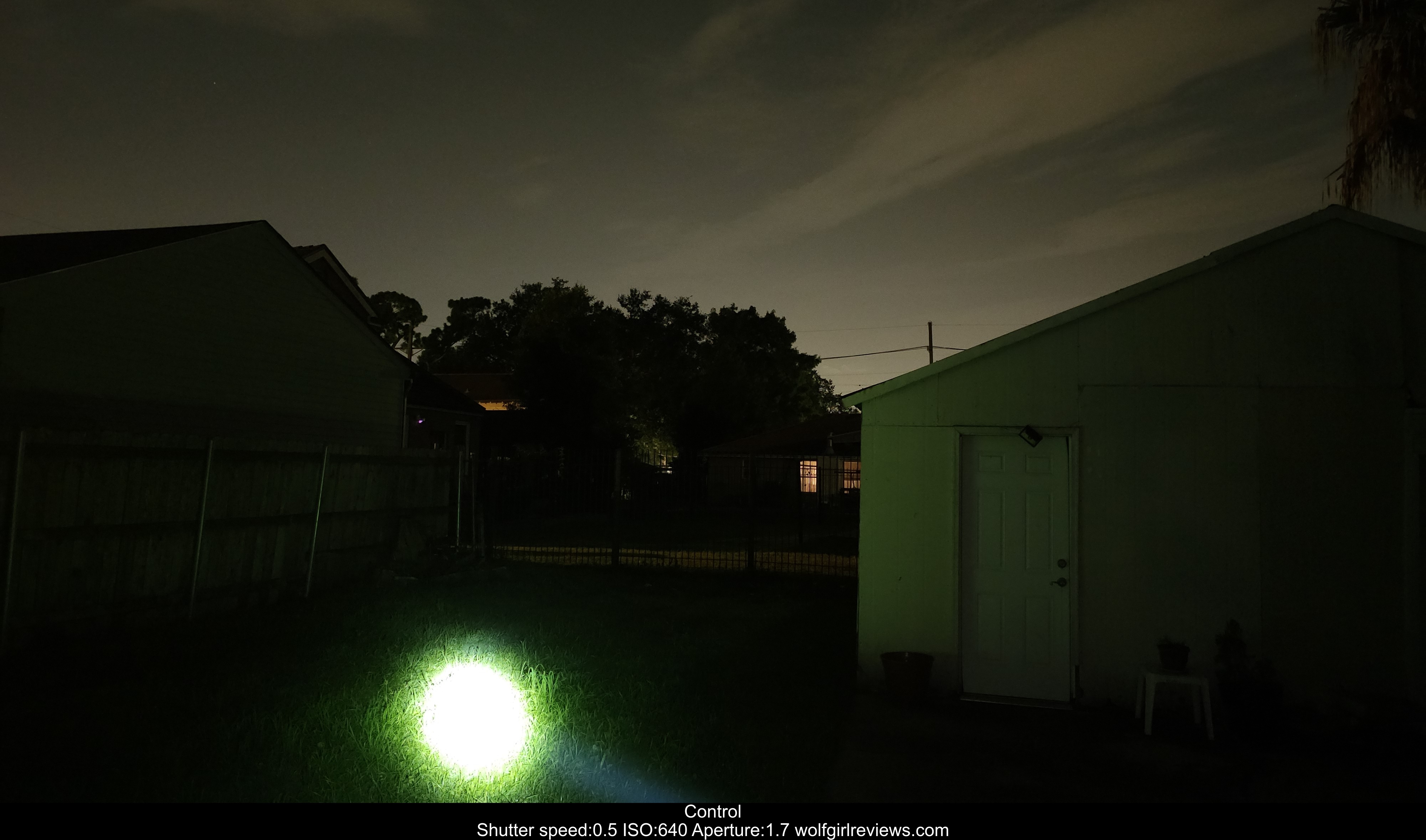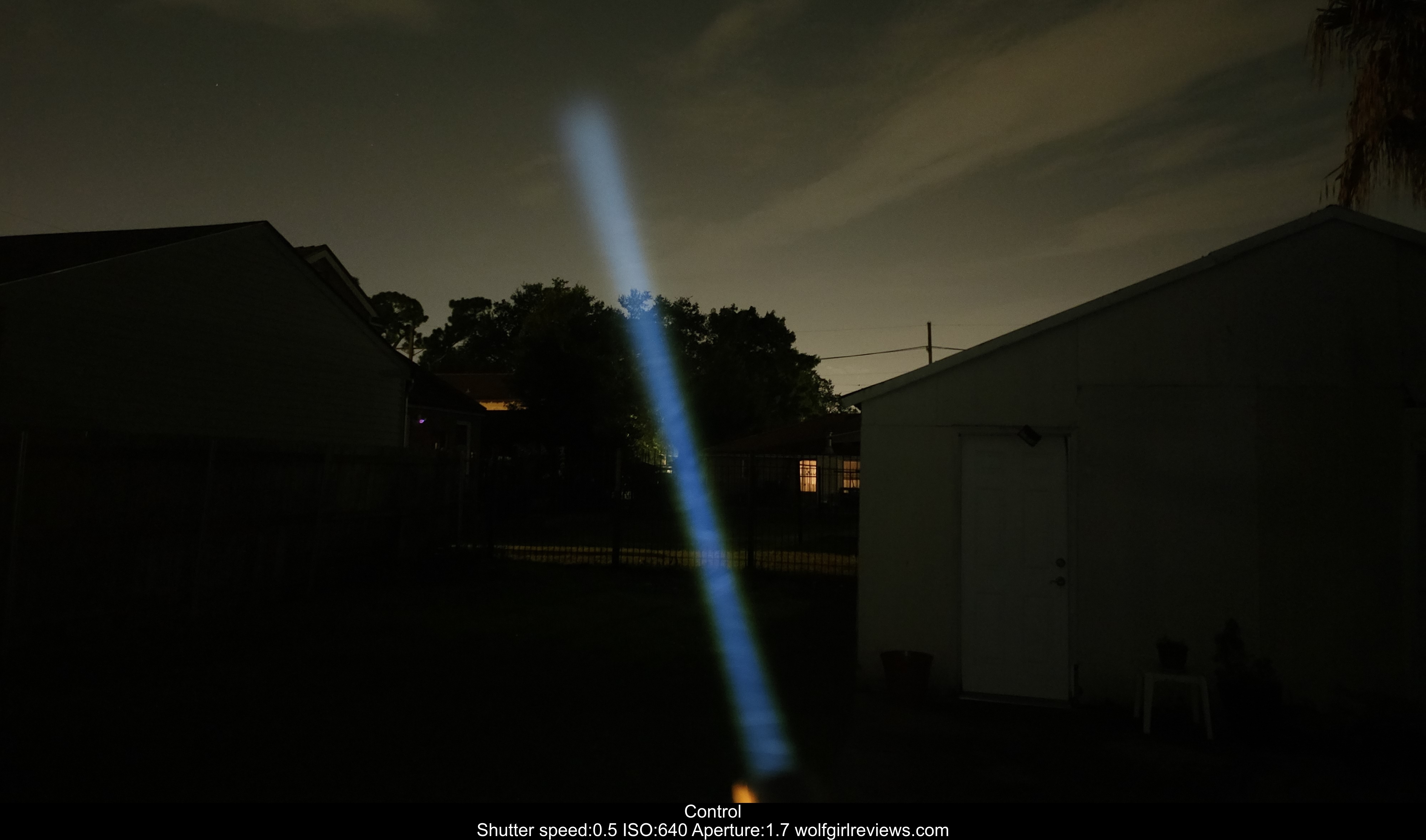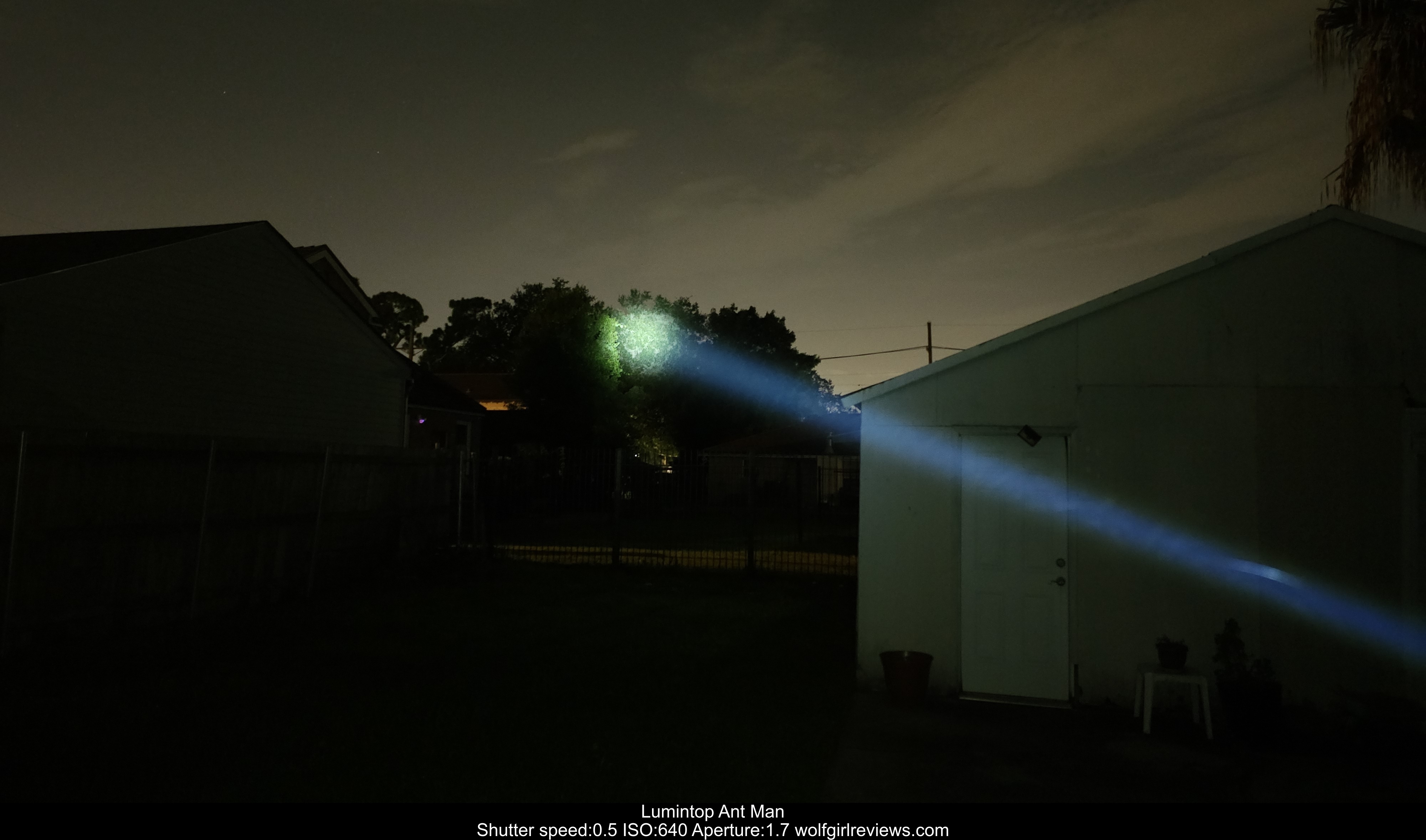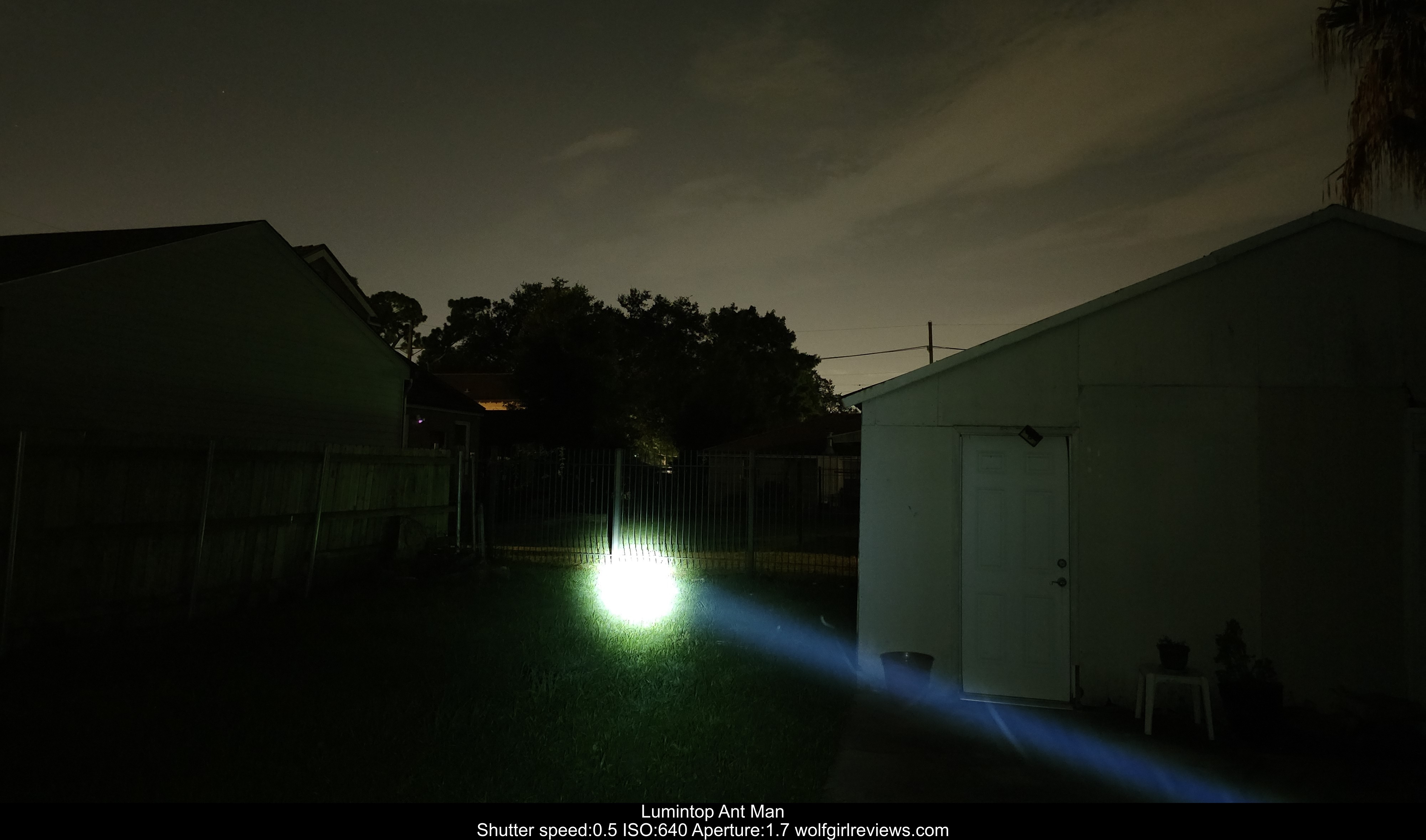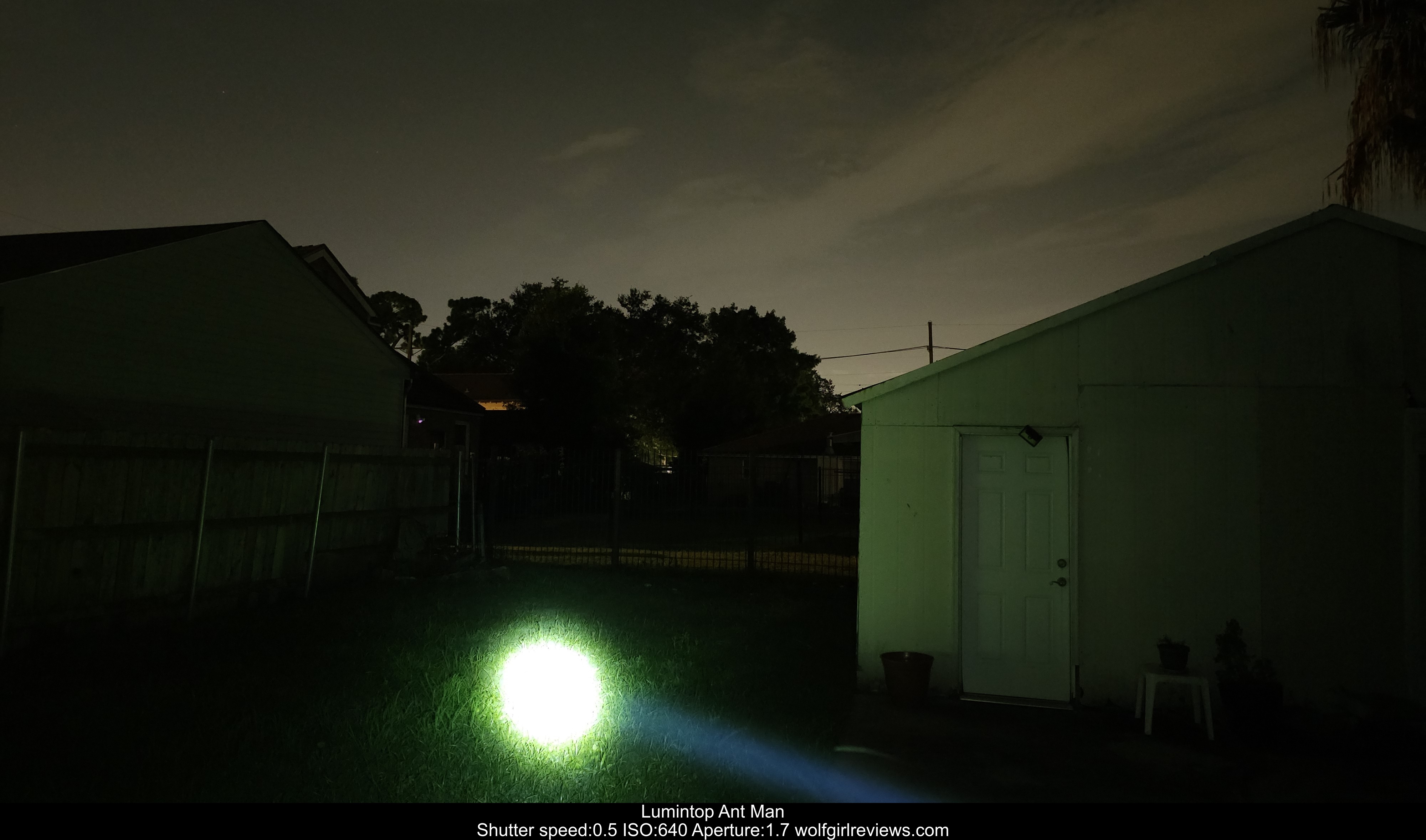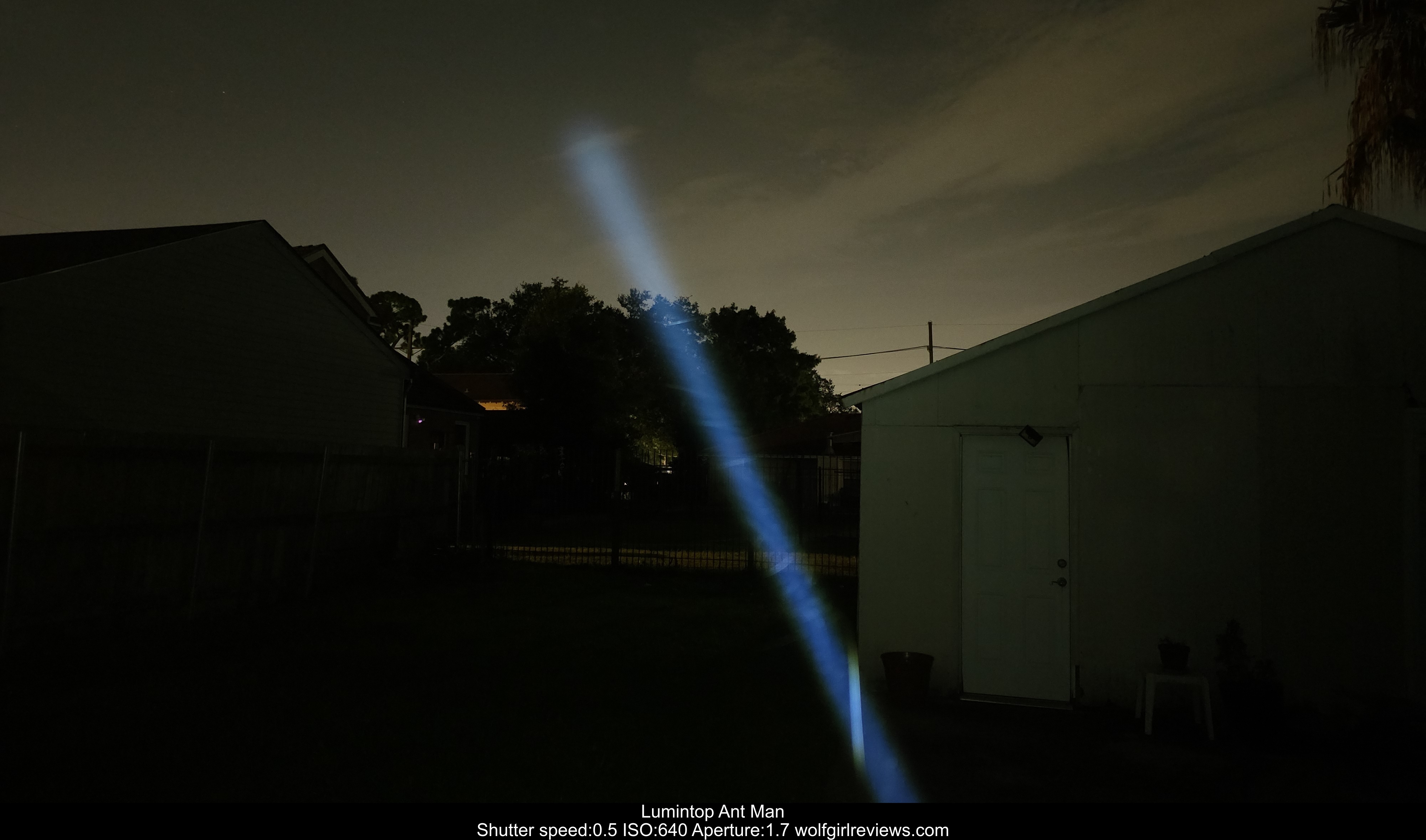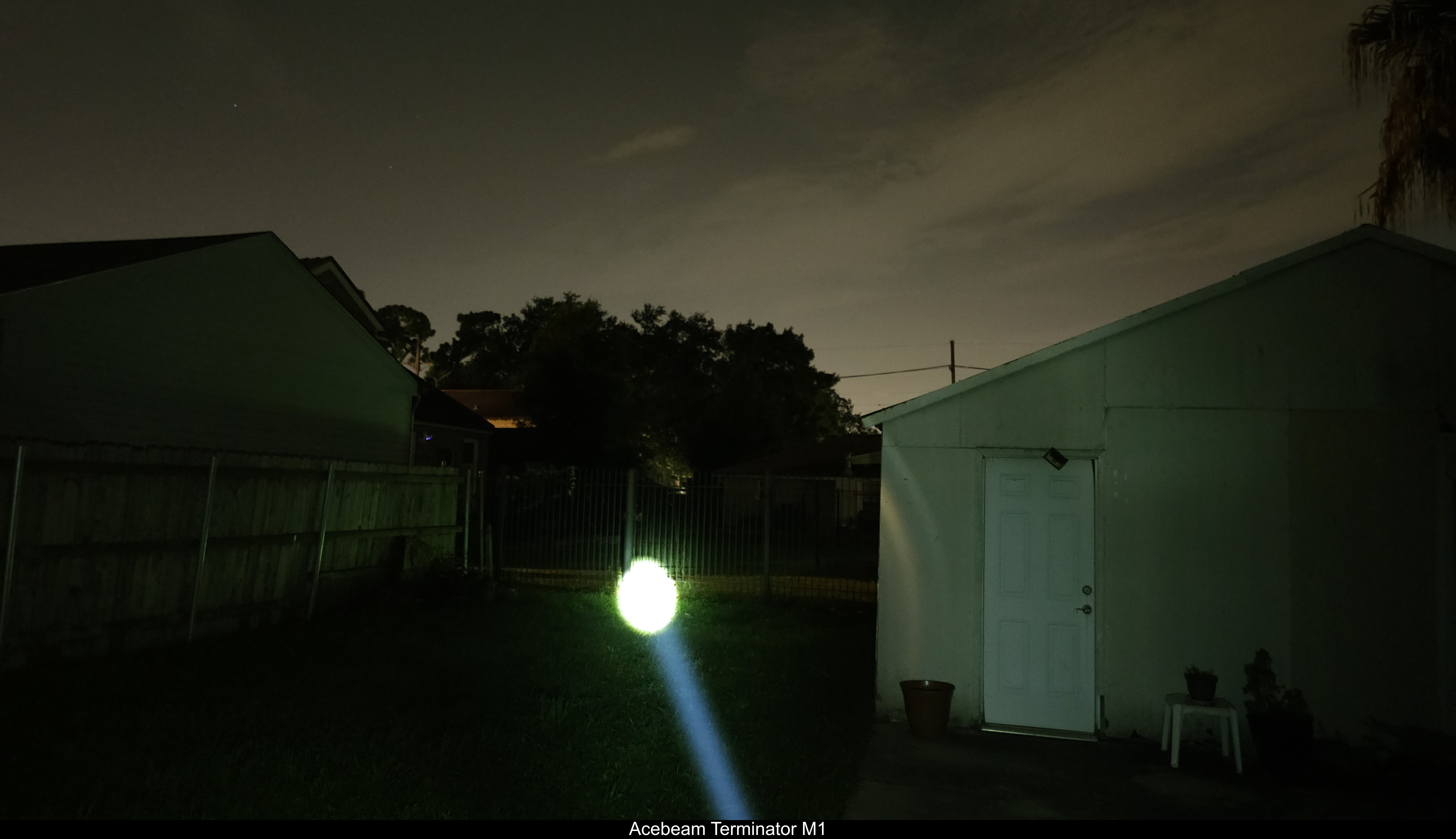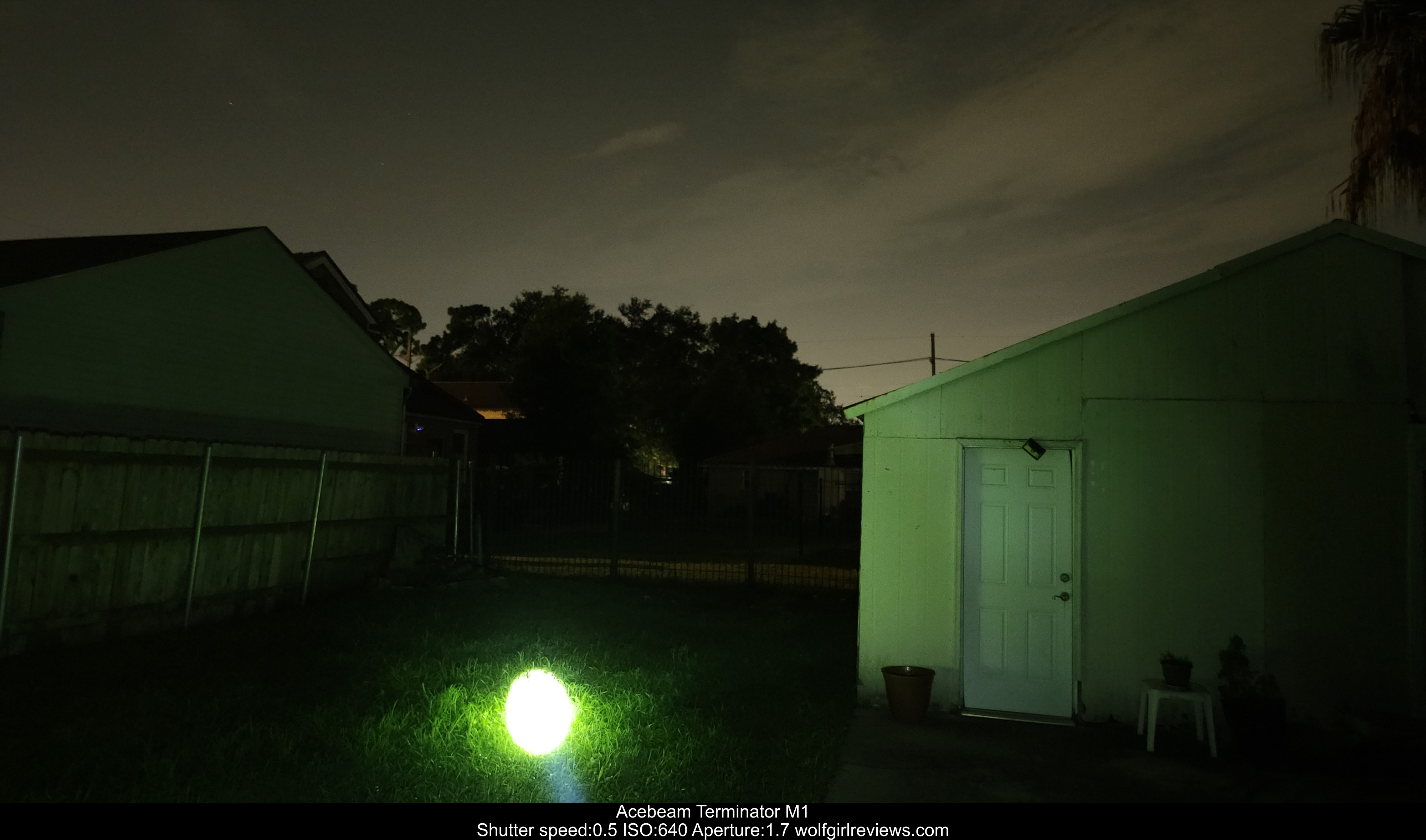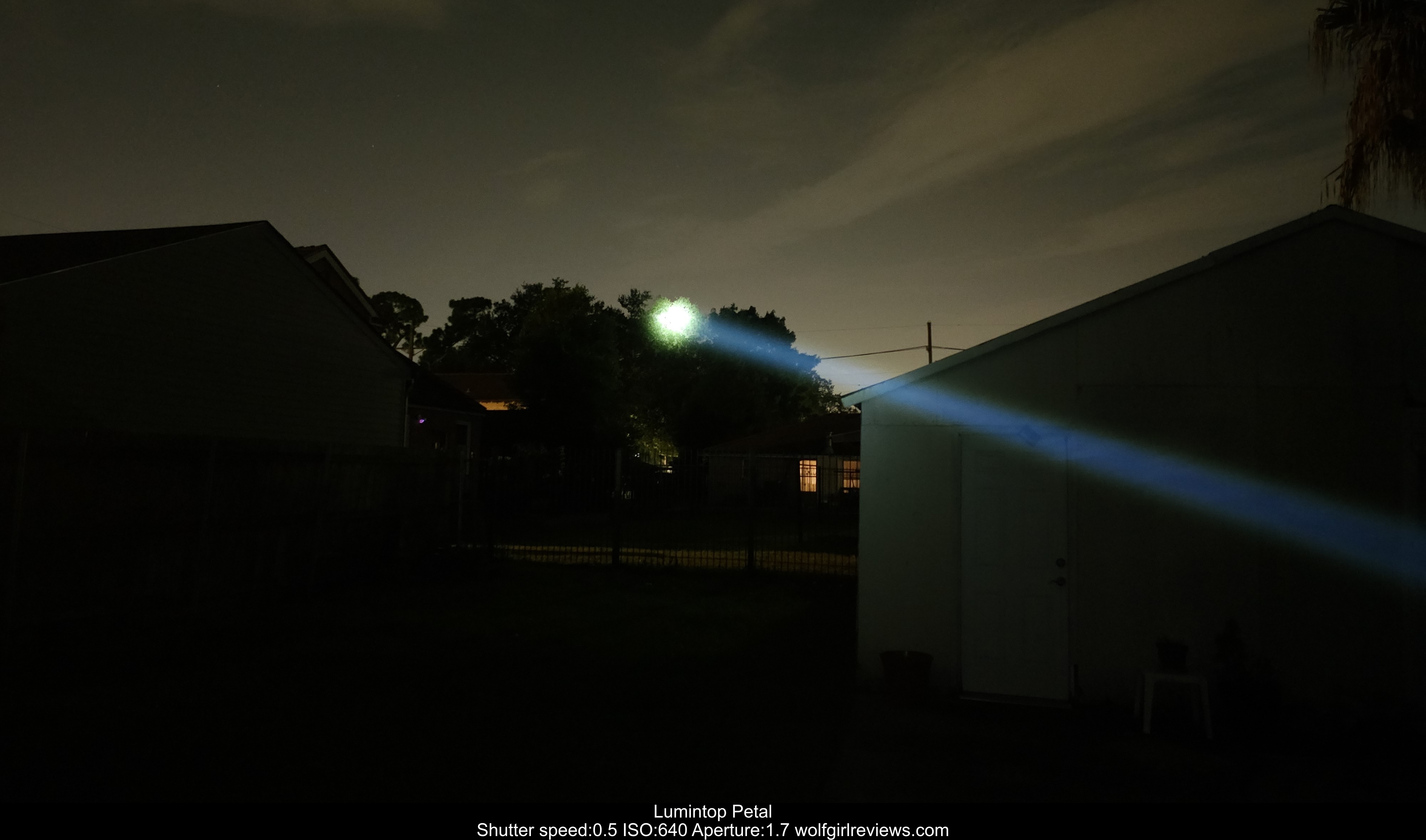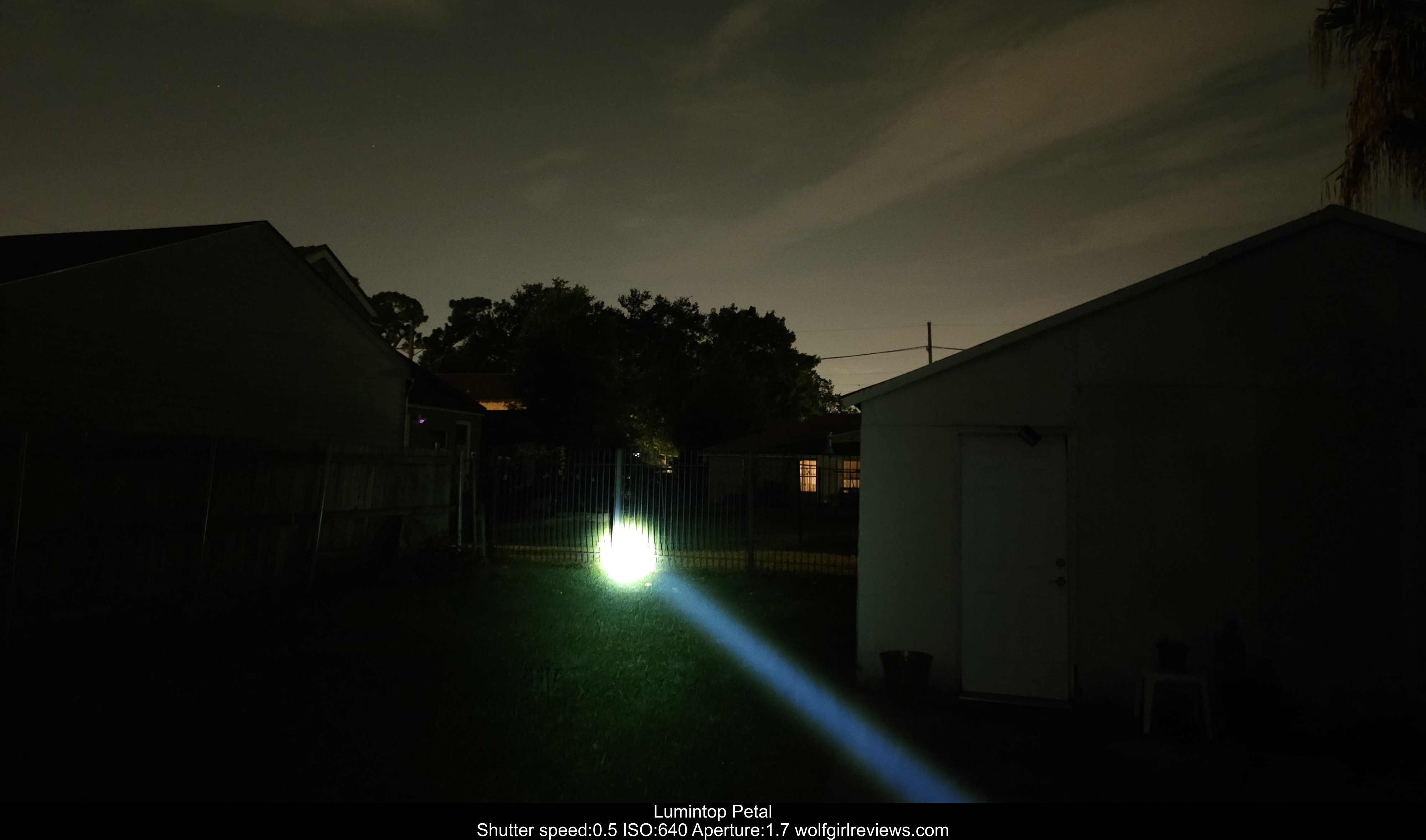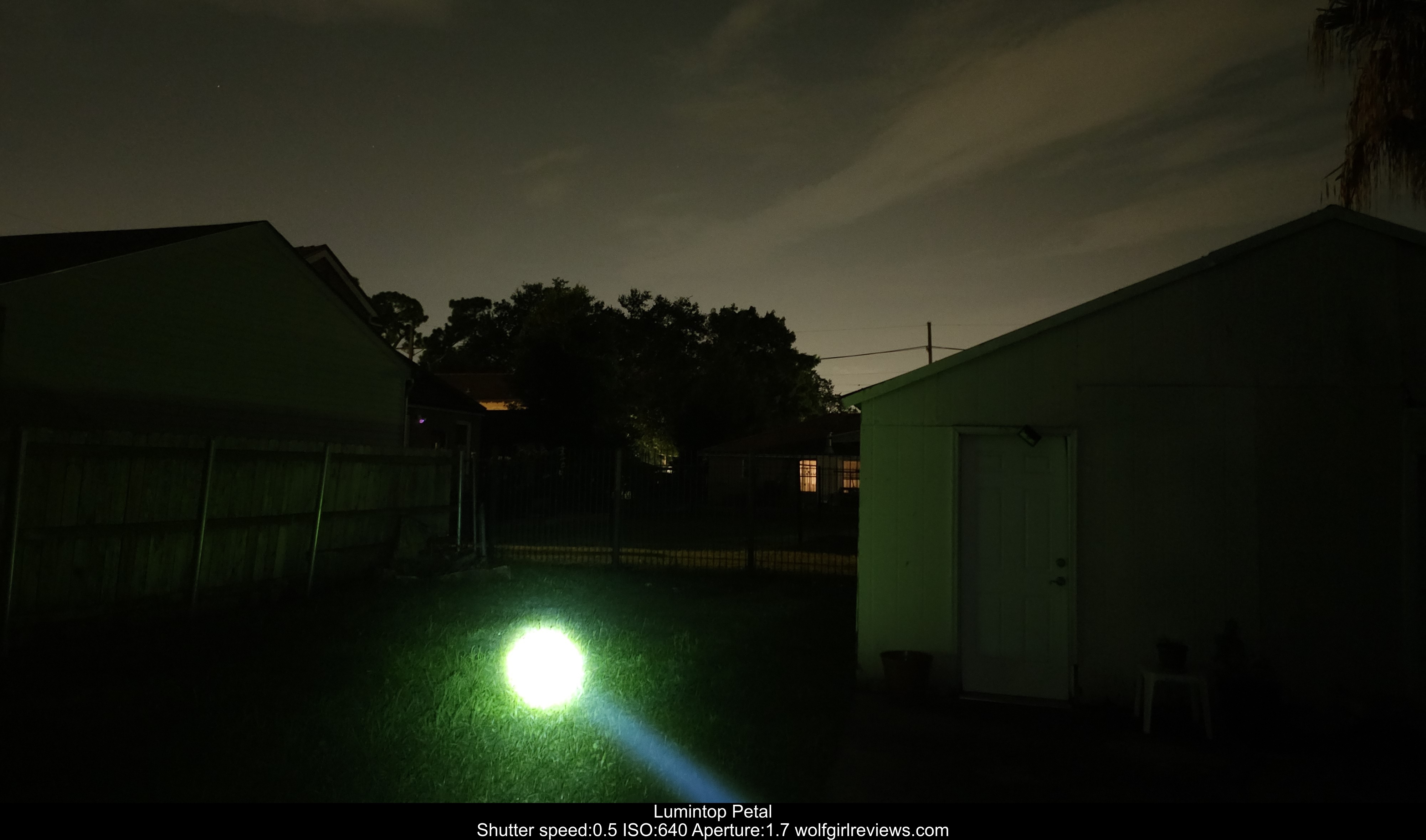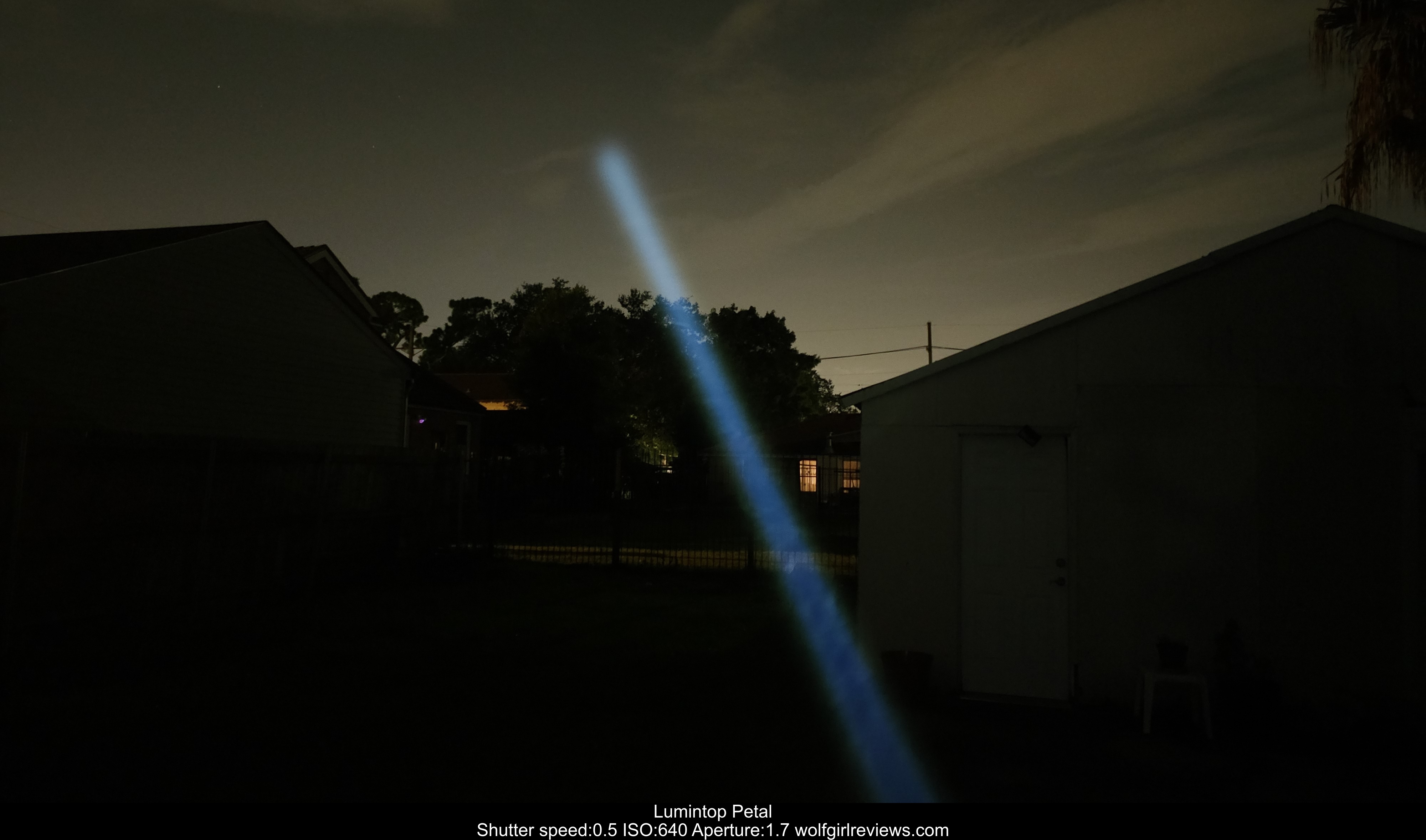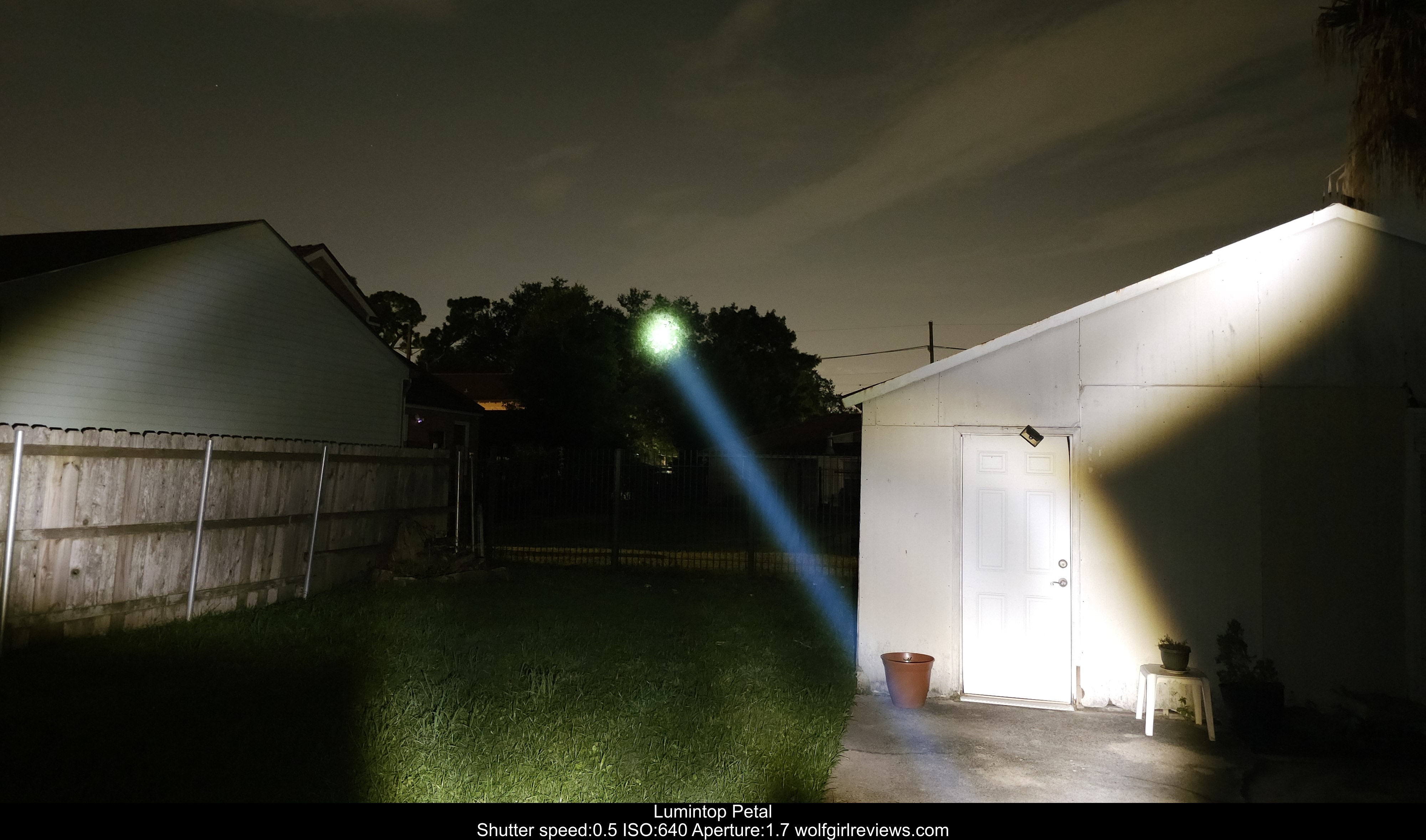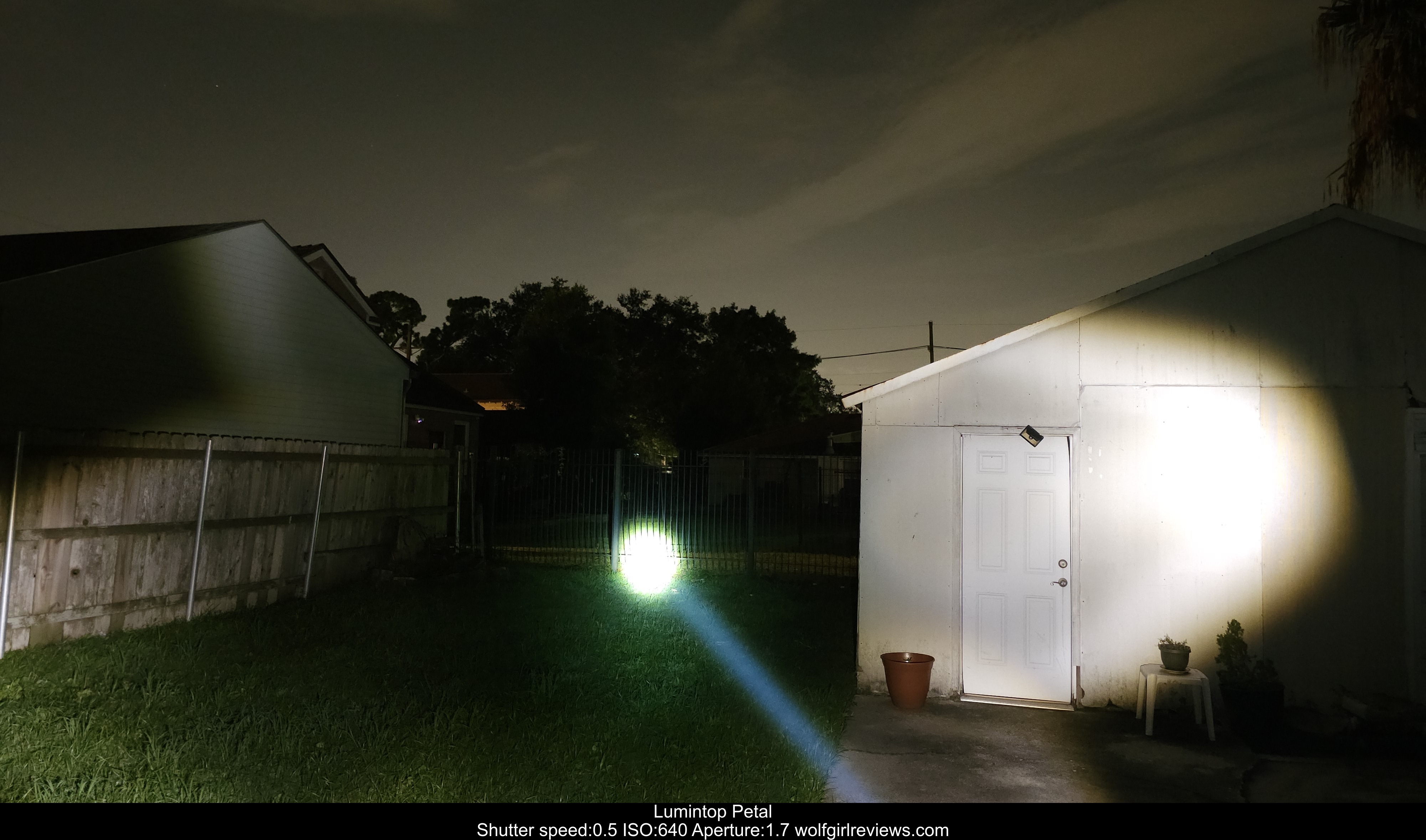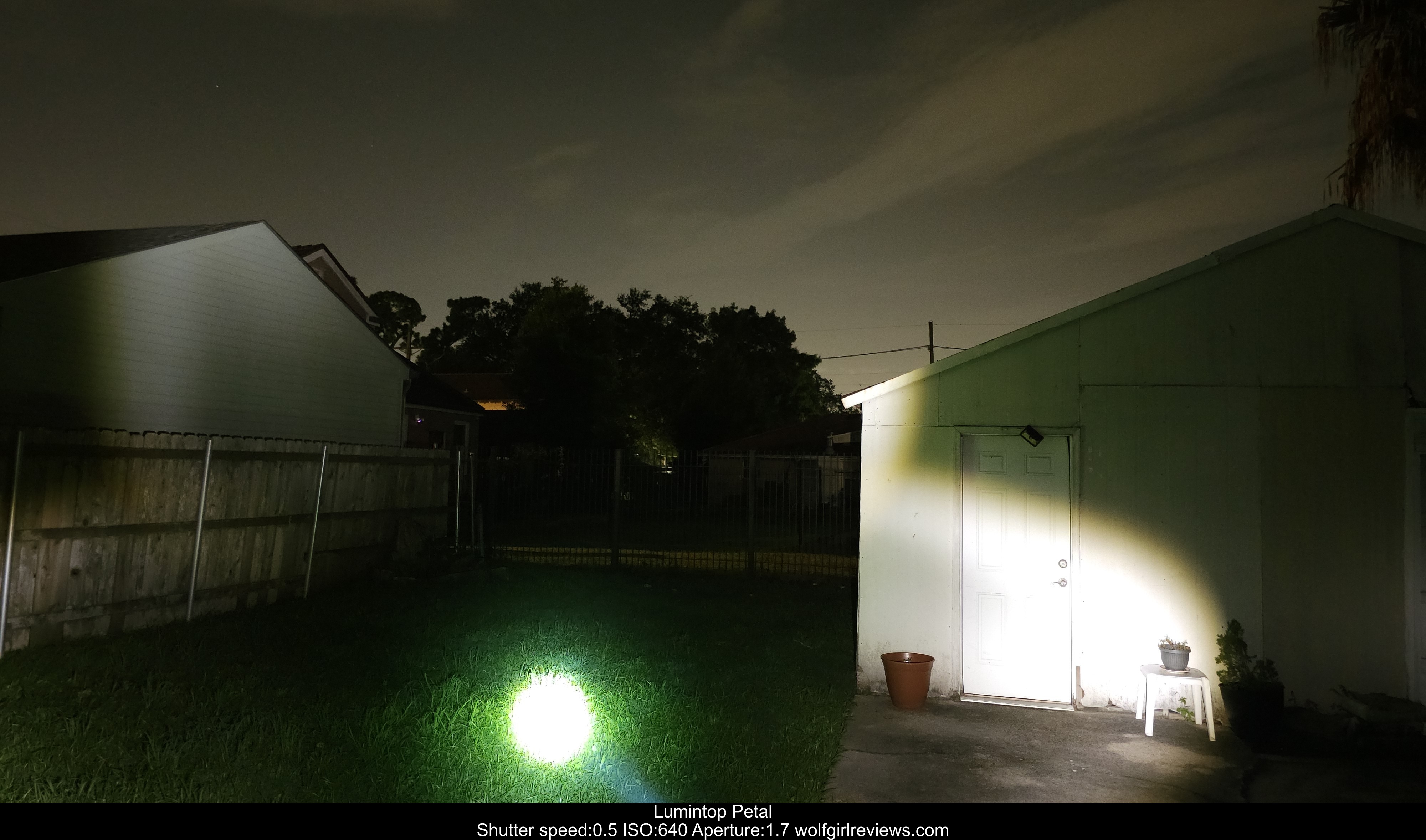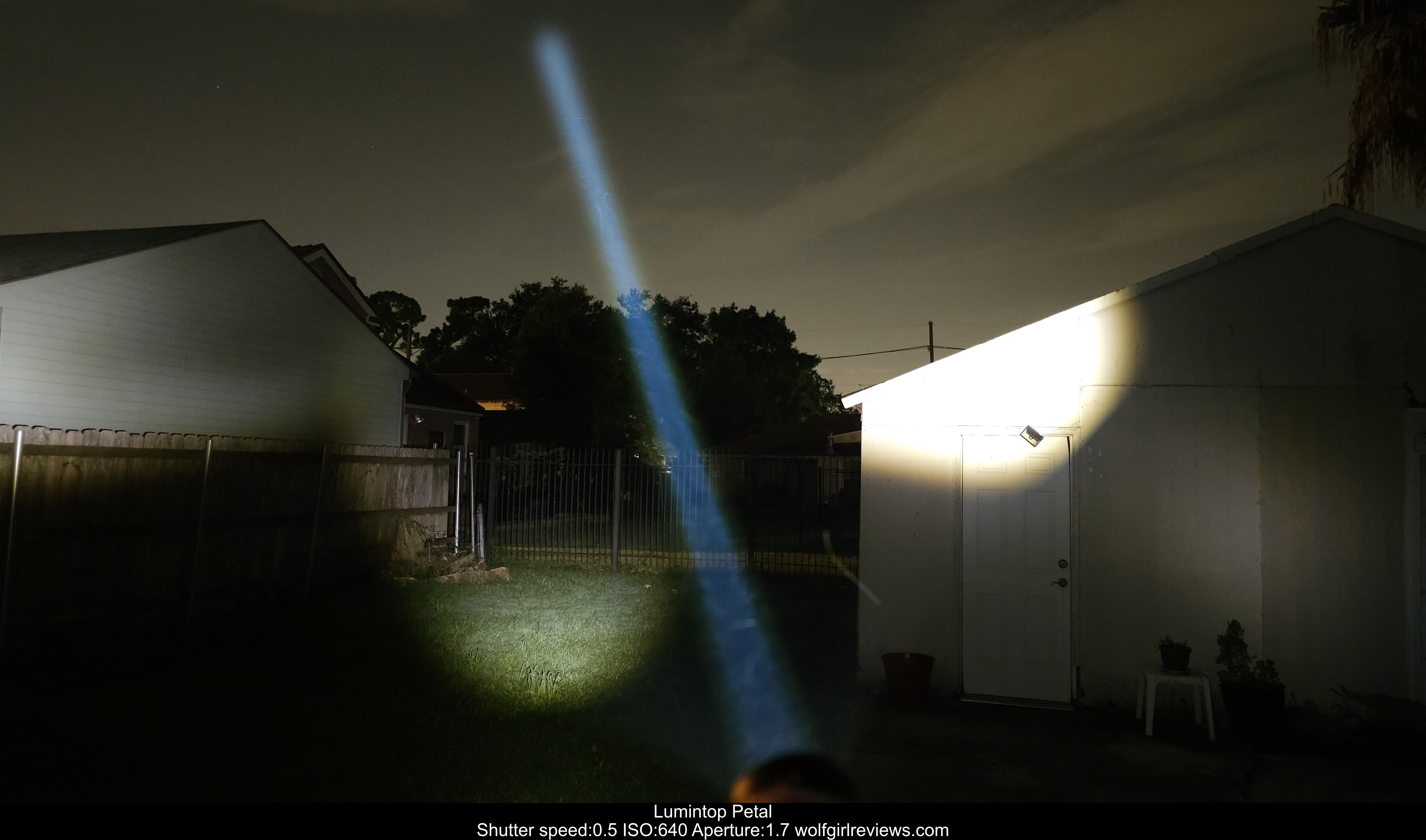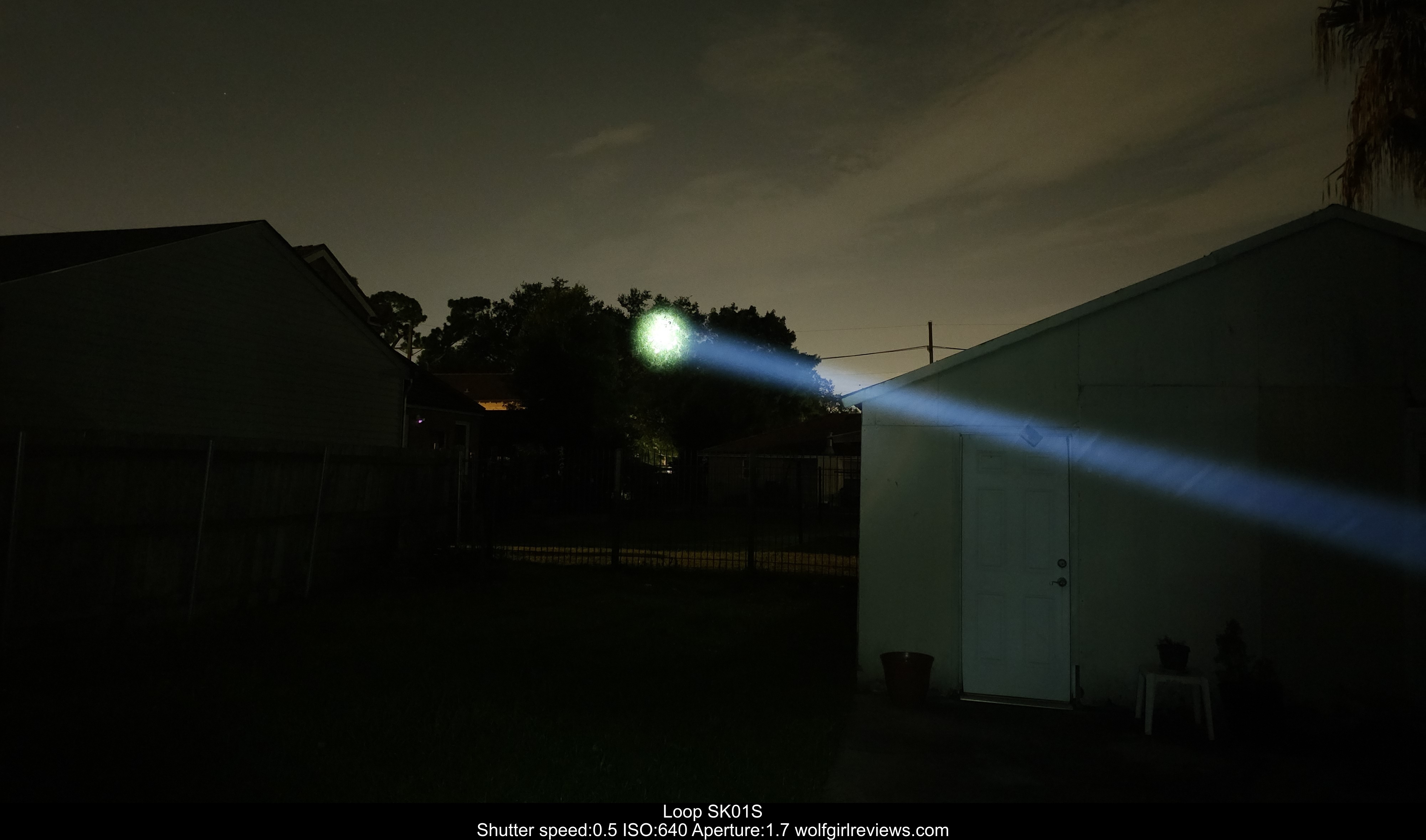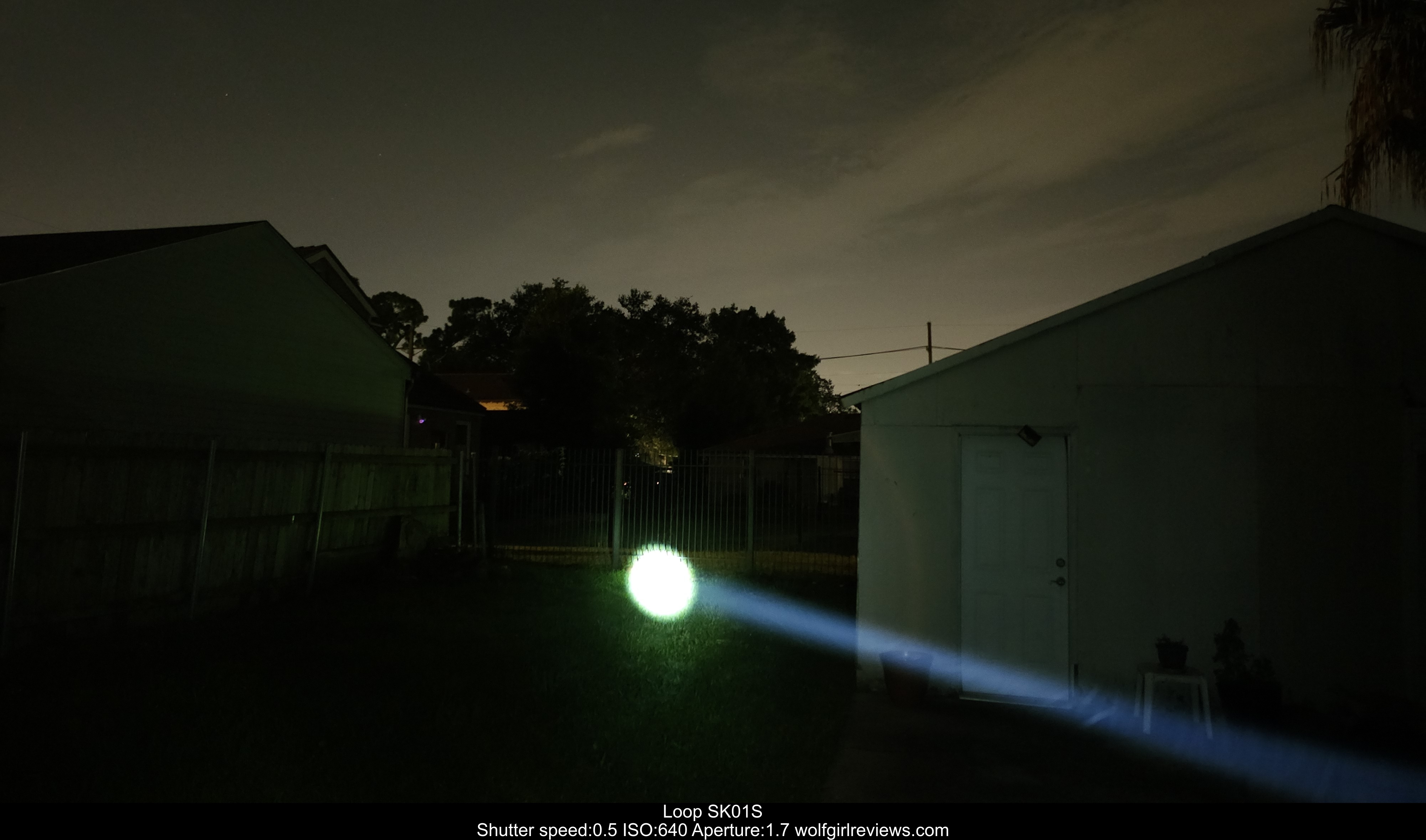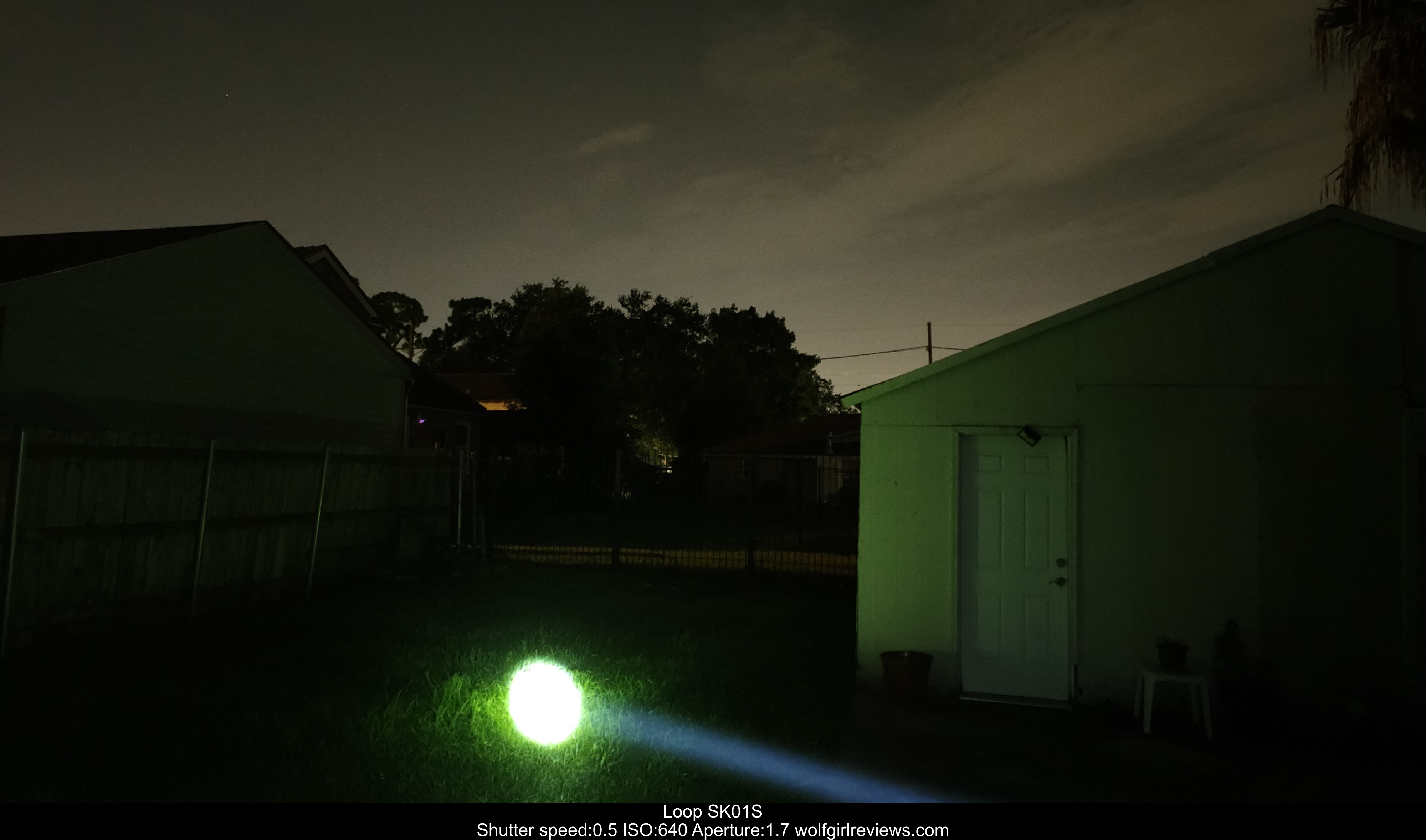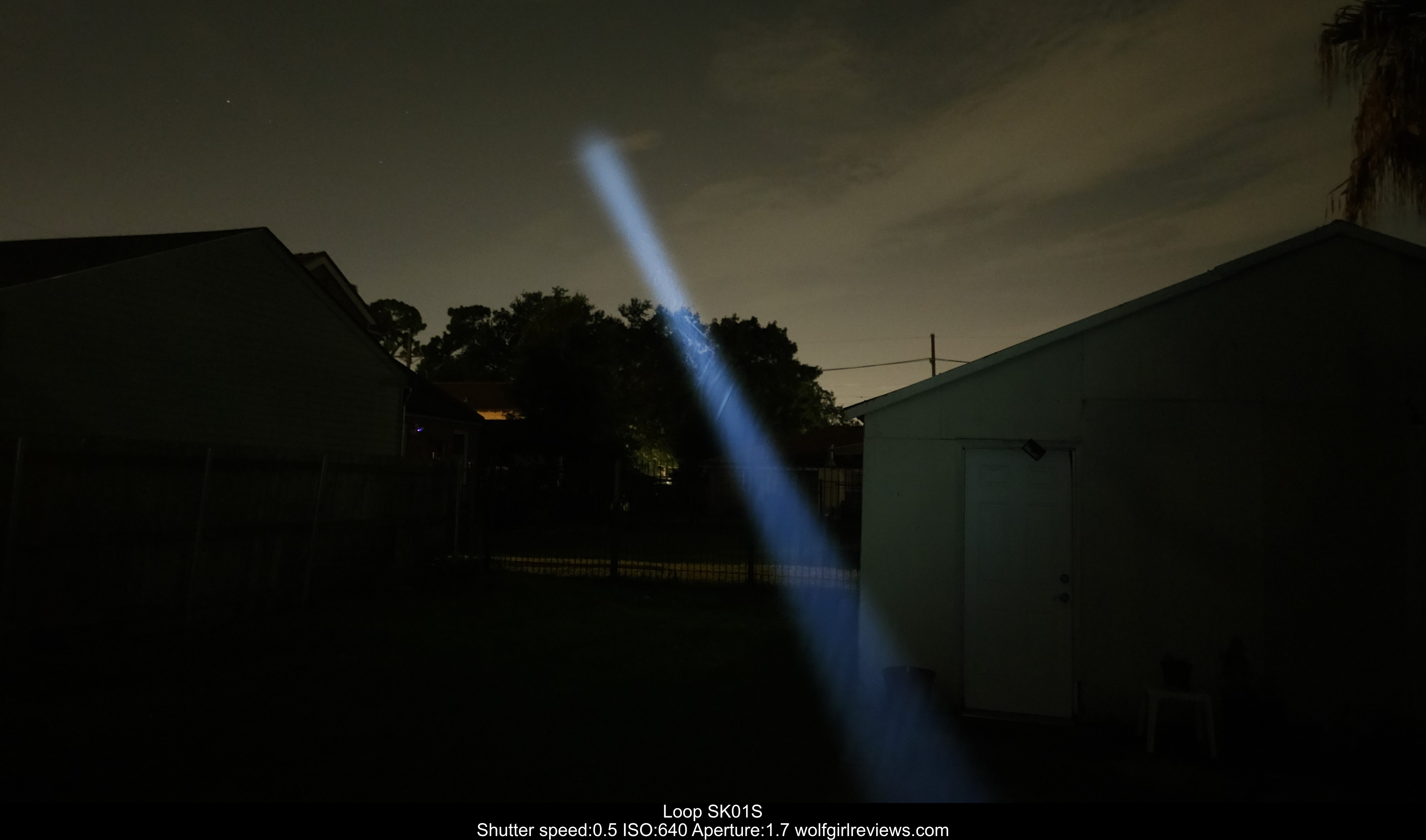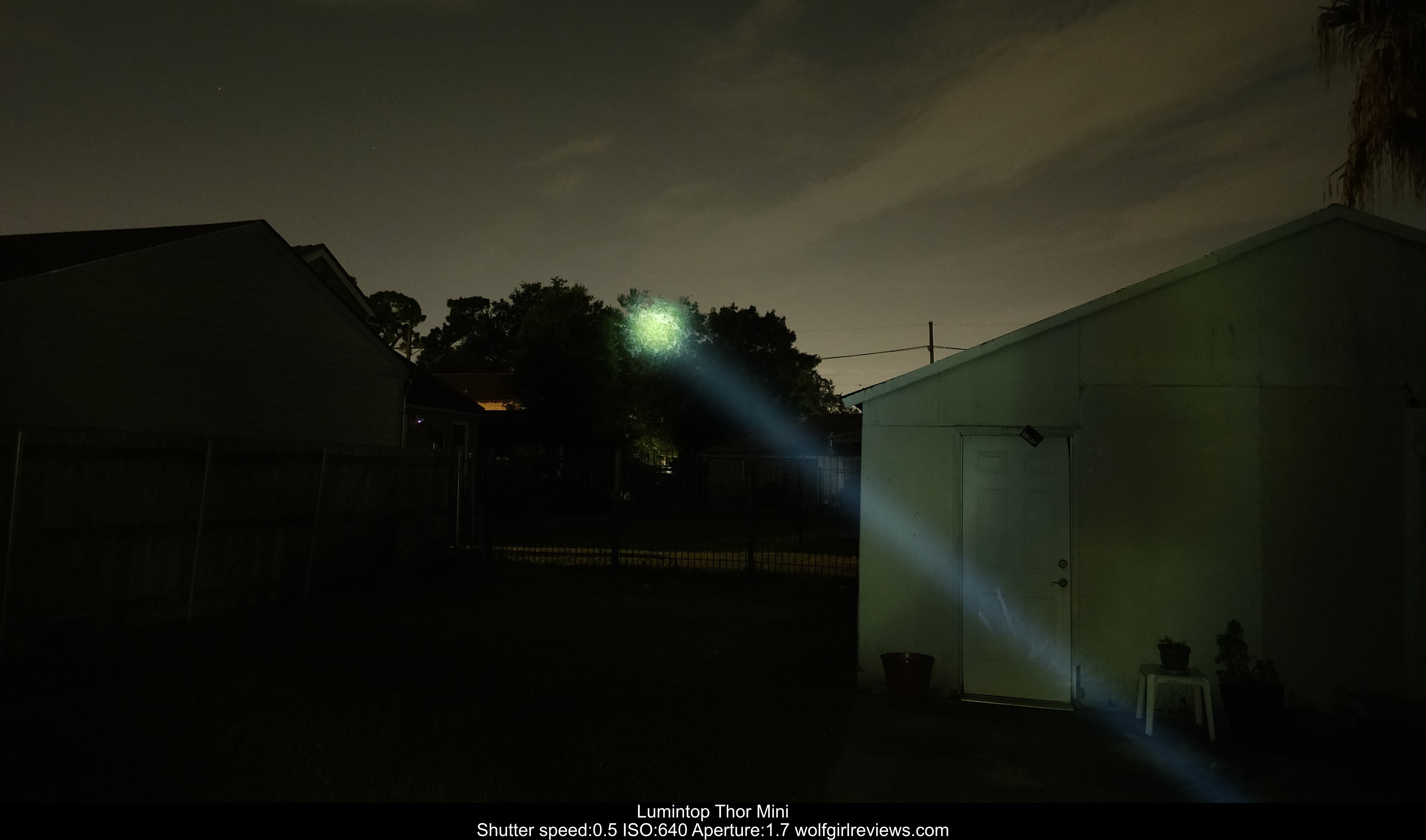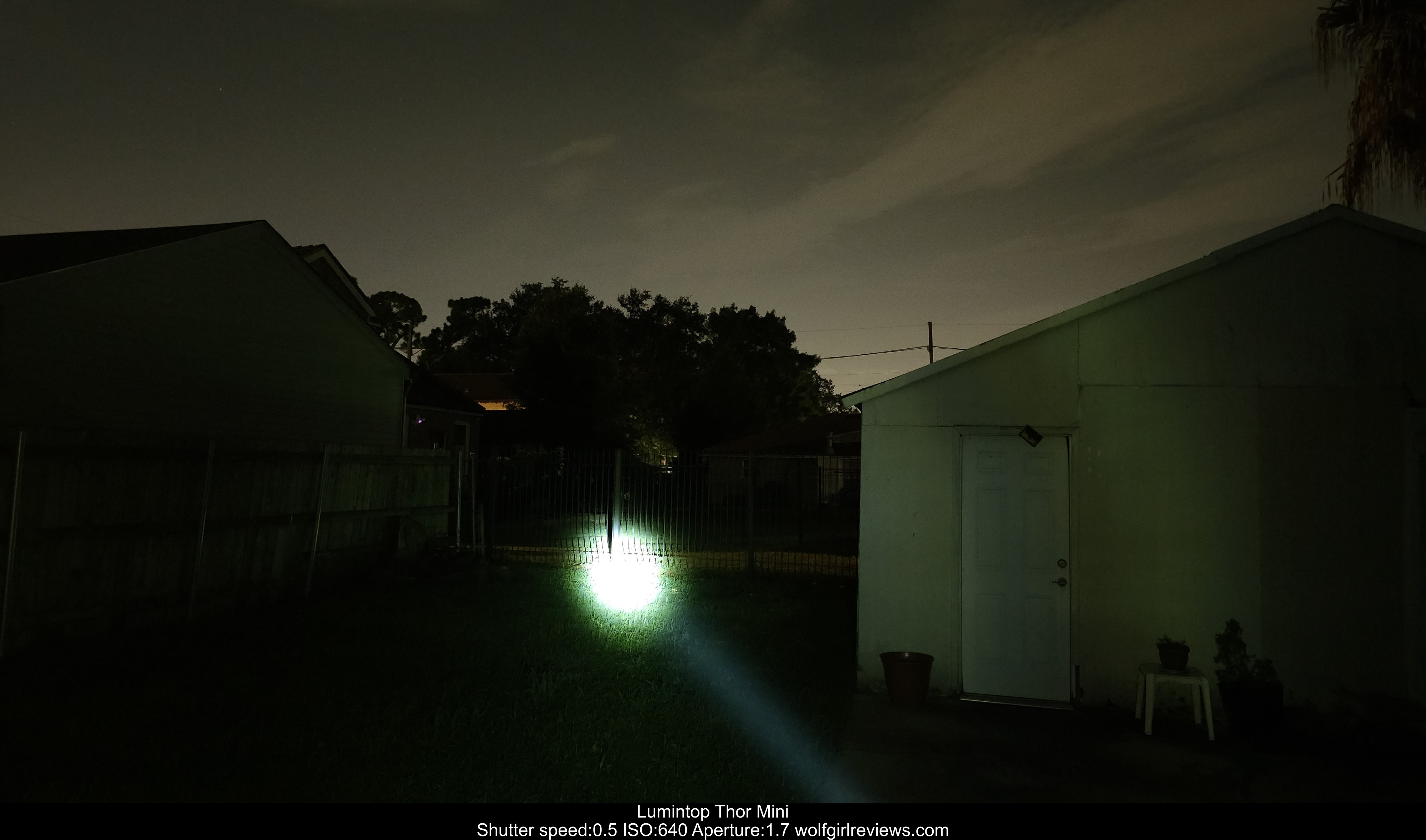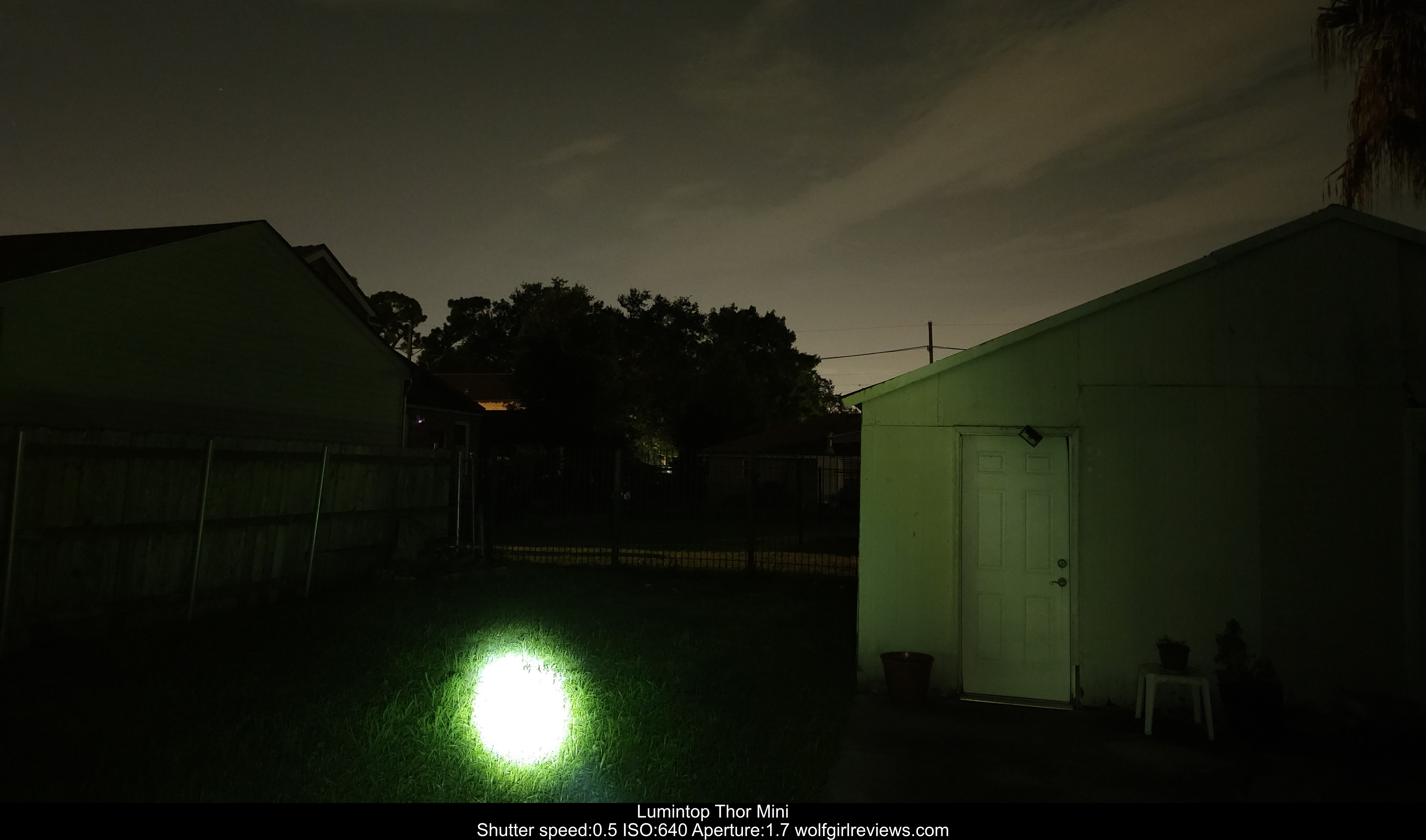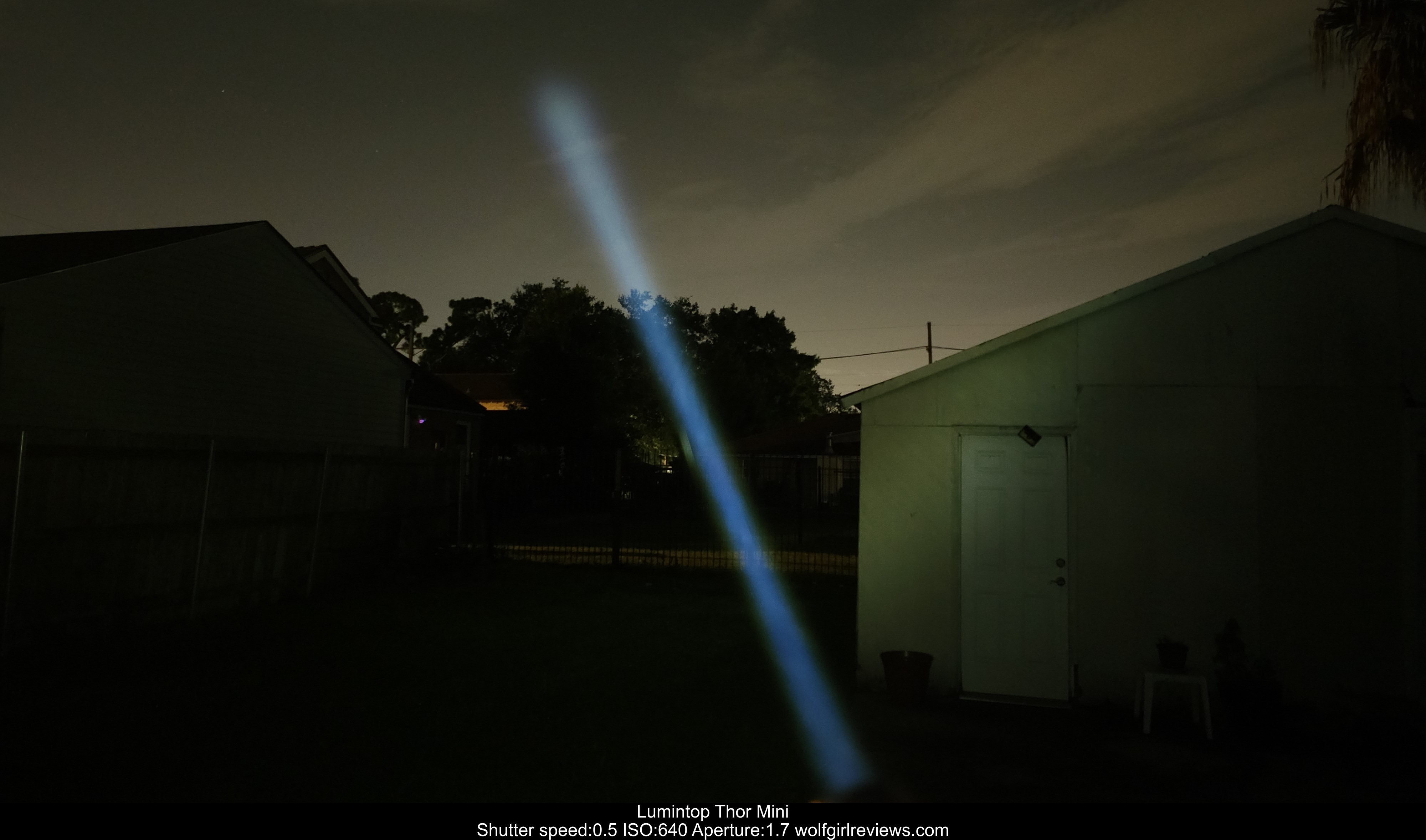"New NLightD Day?"
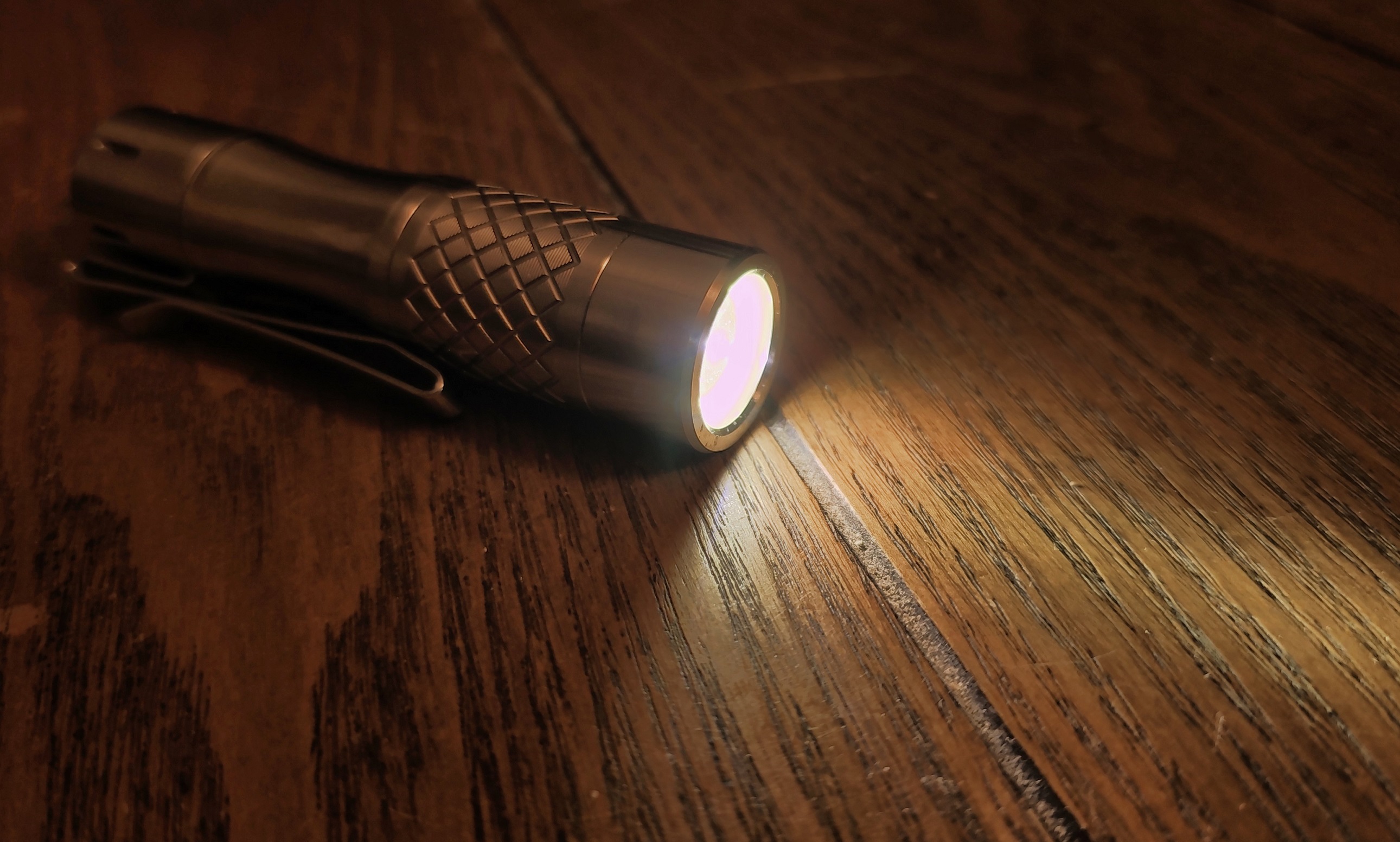 The NLightD L2 is a small pocket 14500 LEP, available in many materials and finishes.
The NLightD L2 is a small pocket 14500 LEP, available in many materials and finishes.
Updates
- 2024/08/19: Mentioned limited editions, glow tubes, and pocket clip. Fixed capitalisation of NLightD.
Introduction, Background, and Official Specs
NLightD is a brand from Nealsgadgets, which has so far offered two different models of LEP. The L2 was released recently, and is a small LEP using a 14500 battery, and operated by a mechanical tailswitch. The L2 is available in aluminium (both in anodised and MAO finishes), copper, or titanium, in addition to a limited edition premium version in patterned titanium, TiCu, and smooth copper with no knurling. This review is for the titanium version.
Official specs and test results:
| Parameter | Official Value | Measured |
|---|---|---|
| Output (High) | 300 lm | 275 lm |
| Output (Low) | 100 lm | 108 lm |
| Runtime (High) | (not specified) | 50 minutes |
| Runtime (low) | (not specified) | 1 hour 4 minutes |
| Intensity (High) | 122,600 cd (700 m) | 127,664 cd (714 m) |
| Intensity (Low) | (not specified) | 43,684 cd (418 m) |
| IP rating | IPX8 (2 m immersion) | |
| Impact resistance | 1 m | |
| Weight (without battery) (aluminium) | 85.4 g* | |
| Weight (without battery) (titanium) | (not specified) | 119.1 g |
* Weight for the aluminium version is specified as 85.4g; weight is not specified for titanium or copper.
Calculated throw distances are using the ANSI FL1 standard and represent the distance at which 0.25 lux illumination is achieved, or the approximate level of light from a full moon - for a real world approximation of usable throw, divide this number by two.
General information:
| Parameter | Value |
|---|---|
| Battery size | 14500 |
| Battery type | Flat top unprotected |
| Battery check mode | No |
| Charging | No |
| Emitters | LEP |
| LVP | Yes (3.00 V) |
| MSRP | $160 (aluminium/copper), $230 (titanium) |
| Price (at time of publication) | $135 (aluminium/copper), $180 (titanium) |
For runtime testing, I give two figures when possible. The ANSI FL1 runtime is calculated by when the light drops below 10% of initial output. I also attempt to run the light past this to find the point where it switches off automatically if possible. Many lights will run at 1 lumen of less for an extended time before powering off, and with these lights I note my observations on when the runtime test was terminated, and may terminate tests at this point as my current measuring setup has a minimum of 1 lumen. For testing of output, my acceptable margin of error is between 5% and 10%, with margin increasing with output.
I received a discount on purchasing this light from Neal in exchange for a review, and may receive a commission if the discount code featured in this review is used. I am not otherwise compensated for this review, and am giving my honest opinion without holding back on any negative experiences or overstating any positive. I may use affiliate links to Amazon or similar sites for things such as measuring equipment I use, but do not otherwise have any related interest in anything I mention.
First Impressions, Physical Design, and Build Quality
The L2 comes in a relatively plain cardboard box, with a small user manual and two spare o-rings. The L2 is also available with a battery - I bought mine with the battery, which is a Vapcell H10 that was included inside the light. A pocket clip is preinstalled on the light, and there are no other accessories.
The L2 has a long head and tailcap, with a concave curve on the body tube in the middle. The pocket clip is retained by the tailcap, is a deep carry type, and bidirectional. The clip has about the right amount of spring, being easy to clip and unclip without feeling excessively loose, and the pinch point is against a smooth and flat area of the body with no curve or knurling. The tailcap has 6 slots for tritium or glow tubes (1.5mm x 6mm), and a metal switch at the top, held in place by a metal retaining ring. The switch is a forward-clicky, and actuates with relatively light pressure and only a few mm of travel. The feel is consistent, and neither too stiff nor too soft.
The body tube is plain and smooth with no knurling, and a concave indentation reminiscent of the Noctigon KR1, although without the texture. The tube flattens out at the very top and bottom where it meets the head and tailcap. The threads on each end are a different length and size, so the tube is not reversible. I did attempt to switch the clip to the head end of the tube when testing, which caused the clip to become stuck on the threads, and I snapped the clip while attempting to remove it; my thanks to Neal for sending a new clip when this happened, and as such, consider this something I tried so nobody else needs to. With the clip removed, the L2 does not function as it is necessary for the tailcap to make contact for the electrical path. Neal also added the pocket clip as a separate item in case anyone else needs a replacement/spare, or just wants a different colour than the version they chose normally comes with.
The head is relatively deep, in addition to a long bezel, and has shallow diamond pattern knurling cut into it, with the face of each raised section additionally having finer and shallower horizontal lines. The end result is grippy, with a pleasant feeling in the hand, and without any obviously sharp-feeling edges. The L2's optics are protected by a glass lens, with a thick glow-in-the-dark ring situated behind it. The LEP module appears to be a shine-through type.
There are no markings of any type anywhere on the body, and the body components are not glued together and able to be freely disassembled. Overall, the L2's build quality is excellent, with no flaws or fit and finish issues, including very smooth threads on my sample even in titanium, which is often known for having gritty feeling threads. The pocket clip does sometimes get in the way of removing the tailcap for a battery change, but the battery can be equally easily accessed via removing the head. I did initially have an issue where tightening the tailcap all the way down would occasionally cause the light to not function, but this was resolved by a simple adjustment of the pocket clip by a few mm, so was likely just poor electrical contact. When the tailcap is tightened all the way down, the clip is held tightly enough that it can not be rotated.
The L2's warranty is described in the user manual, and covers repair or replacement within 1 year of purchase.
Size Comparison
I took comparison photos of the L2 with a range of small LEPs and small to medium lights for points of comparison.
- Lumintop Ant Man
- Lumintop Thor Mini
- Lumintop Petal (same body as Thor 1)
- Lumintop Thor 2 (18350)
- Weltool W3 Pro Tac (18350)
- Loop SK01S LEP
- Lumintop FW1A Pro
- Fireflylite E07X Cannon
- Convoy S2+
- Emisar D4K
- Acebeam Rider RX
- Reylight Gemini
- Emisar D3AA
- Wurkkos TS10
- Reylight Pineapple Mini
- Noctigon KR4
- Lumintop FW3A
User Interface
The L2 has an extremely simple forward clicky UI, with two modes, high or low, and mode memory. There is no strobe or any other hidden mode. A half-press switches the light on in the previously used mode; releasing the switch and pressing it again within approximately 1 second will switch to the other mode. A full press will lock in the selected mode. The driver has low voltage protection and will blink when the battery is critically low, before switching off at 3.0V - in my testing the period of blinking was around the last 4 minutes of the runtime on both high and low.
| What it gets right | What it gets wrong |
|---|---|
| Easy and fast to learn | With an LEP, I would prefer to always start on high, perhaps as a configuration option, as when not in total darkness, the difference between high and low is not always obvious |
| LVP is present and activates at a reasonable level | No strobe mode at all, not even hidden |
Using the Light
The L2 is small and easy to carry, being between an FW3A and a D4K or FW1A Pro in length and with a marginally smaller diameter than either. Even in titanium, I found the light easy to carry without it ever feeling too heavy, and the pocket clip was able to keep it in place without any problem. The pocket clip and knurling on the head make it easy to use without being too obtrusive, and the tailswitch stands slightly clear of the tailcap, so operation is easy without looking or when wearing gloves, although if carried with many loose items in a bag, it may be susceptible to accidental activation. Mechanical lockout is possible even on the titanium version by loosening the tailcap and so breaking the negative current path through the pocket clip, although the head was not usable for lockout due to the conductive titanium threads; this would also be true on the copper version.
I found the L2 to have more than enough throw for day to day use, comparable to high performance pocket LED throwers, with a very tight beam comparable to an Osram W1, although in areas high in ambient light pollution, the L2's low output when compared to LED throwers is a disadvantage in beam visibility, although in overall throw it still outperforms any LED thrower comparable in size.
With the pocket clip and tailswitch, the L2 lends itself well to being a secondary light that can be kept to hand when something may be too far for a floodier main light, being very quick to pick up and switch on when needed, although the mode memory in the user interface does mean the user needs some diligence in making sure that next use will activate at the desired level. At a distance, it is relatively obvious when low is selected instead of high, but at closer distances or indoors, it may be possible to miss. If always switched directly on with a click, this is less likely to be a concern unless it is switched off and immediately back on.
When switched on in high mode, the L2 heats up relatively slowly, with active thermal regulation, reaching a maximum surface temperature of 40 degrees C. Aluminium/copper versions will have better thermal performance than titanium, which I would expect to translate to a longer initial high output before stepping down, and possibly a slightly higher sustained output.
Driver and Emitters
The emitter is an LEP module. This can be visually identified as the shine-through type, due to the lack of a shadow in the beam and a consistent circular beam overall. The LEP module, as with almost all LEP modules, is made by Flamingo Optics and appears to be either the same as or extremely similar to the module used in the Lumintop Ant Man and Thor Mini.
LEPs are generally not the light of choice for people strongly concerned about tint, but the L2 still makes a reasonably good showing of itself here. There is some angular tint shift present in the beam, but less than I notice in other similarly sized LEPs, and the hotspot seems well focused with minimal yellow rings. There is relatively little spill at close to medium ranges, while diffraction provides some at long distance.
I measured the L2's CCT and CRI with a Colormunki Photo and ArgyllCMS.
CRI and tint
Power and Charging
The L2 does not include any built-in charging. It is optionally sold with a battery, which is a Vapcell H10, a high drain 14500 cell and in general my go-to 14500. The user manual specifies the maximum power draw is 8.4W, which would give a maximum draw of approximately 2.3A, so a higher capacity cell such as a Vapcell F12 should also be usable without any performance loss.
The included battery is a flat top type, and button tops are too long and resulted in the head not being able to be screwed down all the way.
Moddability and Repairability
There is no glue used in any of the L2's body, so it can be freely disassembled, although I would recommend against disassembling the head due to the nature of LEP modules, as reassembly is tricky and it is easy to contaminate the optics. The tailswitch has indentations for a tool in its retaining ring, so would be relatively easy to remove, and a swap to a reverse clicky is likely possible if a suitable switch can be found. As mentioned earlier, the pocket clip is required for the negative current path, although it could be replaced by a conductive washer of the appropriate size and thickness.
There are 6 slots for glow or tritium tubes, and Neal also sells glow tubes in sets of 6. To install the glow tubes, Norland NOA61 is the recommended adhesive, which can be cured using a 365nm UV light.
Performance
All lumen measurements taken using a TKLamp TK2303D. This is a project that I initially contacted TKLamp about creating the datalogging version, and I received mine at a discounted rate as part of a BLF/Reddit group buy of the initial production run. I calibrate my TK2303D using a calibration lamp designed by TKLamp for the purpose. Candela measurements were performed indoors at a distance of 4m, using a UNI-T UT383BT datalogging luxmeter.
Output and Throw
| Mode | Spec | Peak output | Output after 30s | Output after 1 minute | Output after 90s | Output after 5 minutes | Output after 15 minutes |
|---|---|---|---|---|---|---|---|
| High | 300 lm | 275 lm | 264 lm | 260 lm | 252 lm | 98 lm | 99 lm |
| Low | 100 lm | 108 lm | 104 lm | 103 lm | 102 lm | 96 lm | 89 lm |
| Mode | Spec | Peak candela | Candela after 30s | Candela after 1 minute | Candela after 5 minutes | Candela after 15 minutes |
|---|---|---|---|---|---|---|
| High | 122,600 cd (700 m) | 127,664 cd (714 m) | 124,560 cd (705.8 m) | 121,840 cd (698.1 m) | 54,864 cd (468.5 m) | 55,488 cd (471.1 m) |
| Low | (not specified) | 43,684 cd (418 m) | 41,661 cd (408.2 m) | 41,081 cd (405.3 m) | 38,972 cd (394.8 m) | 36,519 cd (382.1 m) |
Calculated throw distances are using the ANSI FL1 standard and represent the distance at which 0.25 lux illumination is achieved, or the approximate level of light from a full moon - for a real world approximation of usable throw, divide this number by two.
Runtime
| Mode | Spec | Runtime |
|---|---|---|
| High | N/A | 50 minutes |
| Low | N/A | 1 hour 4 minutes |
Performance Overview
The extremely high intensity of an LEP combined with my relatively small integrating sphere makes lumen output difficult to measure, so I feel 10% is a fair margin of error here - with that considered, the L2 meets specs overall.
Beamshots
| Light | Emitters | Notes |
|---|---|---|
| NLightD L2 | LEP | 300 lm/122,600 cd (spec); 275 lm/127,664 cd (measured) |
| Lumintop Ant Man Ti | LEP | 300 lm/122,600 cd (spec) |
| Acebeam Terminator M1 | LEP | 700 lm/640,000 cd (spec)* |
| Lumintop Petal | LEP | 250 lm/279,000 cd (spec)** |
| Loop SK01S | LEP | 640,000 cd (spec) |
| Lumintop Thor Mini Ti | LEP | 300 lm/122,500 cd (spec) |
* The Terminator M1's LEP comes in noticeably under published specs - for details see 1lumen's review.
** The Petal comes in noticeably over spec - for details see 1lumen's review.
L2
Comparison Beamshots
Competitors
Lumintop Thor Mini: Shorter but slightly wider, 18350 battery instead of 14500. Lighted side e-switch, with a less simple e-switch based UI, including a battery check, lockout mode, and strobe mode. No pocket clip. Marginally lower performance, but appears to be using the same LEP module.
Lumintop Ant Man: Discontinued, but still able to be found. Has a similar LEP module and overall performance; was also available in titanium, although not copper. Almost identical dimensions, although with a worse pocket clip. Similar UI, but with the addition of a strobe mode. No LVP. Slightly lower performance.
Lumintop Thor 1/Petal: Slightly shorter but wider, 18350 battery, higher performance.
Lumintop Thor 2: Medium size, higher performance, 18350 or 18650 battery, significantly larger flared head.
Weltool W2: Larger, higher price point and performance.
Weltool W3/W3 Pro Tac (with 18350 tube): Significantly larger, higher performance and price point, 18350 battery with optional short tube, or 21700 battery with standard tube.
This section does not list all possible alternatives, is subject to my own interest and views on listed lights, and is primarily intended to give a general overview. A light not being included here does not mean it should not be considered a viable alternative.
Potential Improvements
- Mode memory: An option to disable mode memory so the light will always start on high would be a nice touch.
- Switch: Forward vs reverse clickies will always be a matter of personal preference, but I personally feel a reverse clicky would work better in this light, particularly considering the lack of a strobe mode.
Final Thoughts and Score
| Category | Score | Comments |
|---|---|---|
| Looks | 9/10 | The L2 is beautifully designed, reminiscent of both the Noctigon KR1/KR4 and Lumintop FW series but with several unique touches, and I definitely appreciate the lack of obtrusive markings, with not a "HOT" symbol to be found. The glow/tritium tube slots are a nice additional touch, allowing some user customisation and a little extra flashiness if desired, also complementing the glow ring behind the lens. |
| Quality | 8/10 | The L2 is a well thought-out design, and the pocket clip works well for its intended use, although I would have appreciated a removable clip design, especially since the overall feel of the L2 gives it an excellent sensory feel to me and this is one of those lights that I enjoy having in my hand just for the sensory experience as much as actually using it, for which I tend to prefer lights without a pocket clip. The tailswitch does make some noise when half-pressed, but this is common with many titanium lights, and may be less pronounced on the aluminium or copper versions. Although breaking the pocket clip was my own fault, it did snap with what I would consider reasonably light pressure when I was attempting to un-snag it from the threads, within what could possibly be applied if the light is snagged on something while being carried, although the light still worked fine when this happened as the actual ring part was intact. |
| Performance (absolute) | 7/10 | 300 lm is typical for a small 18350 or 14500 LEP - as mentioned earlier, many of these lights are likely using the same LEP module, although the L2 does outperform the competing Thor Mini and Ant Man. This is certainly more than adequate performance for most use, but it may struggle a little in a situation where there is already high ambient light at nighttime. For practical purposes such as walking, it is more than adequate, although for showing off to a friend, I may feel more inclined to grab an LED thrower in such conditions. |
| Performance (sustained) | 7/10 | My L2 is the titanium version, which will never have the same sustained performance as a copper or aluminium version due to inferior thermal properties, but when considering this (and comparing to other titanium versions of small LEPs, as both my Ant Man and Thor Mini are also the titanium versions), the L2 performs respectably and is able to hold a usable output after the drop from thermal regulation. If sustained performance is important, I would suggest getting the L2 in either aluminium or copper instead of titanium. |
| User interface | 6/10 | There isn't a lot to write about the user interface, which is almost as simple as a light that has multiple modes can get. I would have preferred if it did not have mode memory, as it ended up with me checking if the light was on low or high if I was unsure when I last used it, and in general led to me checking constantly which mode it was in. I personally feel a reverse clicky would work better in this light, particularly considering the lack of a strobe mode, but switch type here is the kind of thing that no matter which it uses, someone would be unhappy about, and it is still perfectly usable with the forward clicky. |
| Practicality | 8/10 | There is not a lot of differentiation in performance for small LEPs, generally being based around the same module design, and with a small enough cell that small differences in driver efficiency are not particularly obvious. The pocket clip is well designed and the L2 easy to carry overall - this is important as this would likely be a second light for someone in combination with a more general purpose LED light. |
| Value | 7/10 | The L2 is more expensive than the competing Thor Mini, but Neal also has regular sales with large discounts if you are patient. Ultimately, with the build quality and the available material choices, I consider this a premium option compared to other small LEPs, for which the price is reasonable. |
| Overall | 8/10 | The L2 is an excellent choice for a small pocket LEP, and a compelling alternative to a larger LED-based thrower, especially as a premium material option and with the overall above-average performance for a small LEP. Build quality as well as overall design and looks are excellent. |
The L2 is available from Nealsgadgets, as is the limited edition premium version. Use code WOLFGIRL for 15% off all products.
As always, feedback is welcome - I am active on BLF or Reddit, both on /r/flashlight and other specific subreddits, and have started my own subreddit for review content at /r/WolfgirlReviews.
>> Home
















